

How to Describe the Wind in Writing (100 Words + Examples)
It can be a bit tricky to find the right words or phrases to make your readers see and feel the wind.
Here is how to describe the wind in writing:
Describe the wind in writing by using sensory language to evoke its force, sound, temperature, effect, direction, time of day, and personified traits. Each description should enhance the narrative, helping to set the scene, build atmosphere, and engage the reader.
In this guide, we’ll discuss all the different ways to describe wind based on its force, sound, speed, and more.
Describing Wind by Its Force

Table of Contents
The force of the wind can dramatically change the perception of a scene.
The contrast between a gentle breeze and a violent gale is not just a measure of intensity.
But can also signify changing moods, symbolize emotional shifts, or foreshadow significant events.
Here is how to do it:
- Gentle : A gentle wind softly touches, a delicate interaction with the environment. Example: “The gentle wind caressed the petals of the blooming flowers, their fragrance subtly wafting in the air.”
- Light : A light breeze is almost playful, just strong enough to stir the leaves. Example: “A light wind tugged at her hair as she sat by the river, the tranquil scene filling her with peace.”
- Calm : A calm wind denotes tranquility and serenity, ideal for peaceful settings. Example: “The calm wind moved lazily through the tall grass, making it sway like waves in a calm sea.”
- Whispering : A whispering wind is quiet, giving a sense of intimacy and closeness. Example: “The whispering wind carried the melody of the distant lullaby, lulling the town to sleep.”
- Soothing : A soothing wind provides relief or comfort. Example: “The soothing wind was a balm against the harsh summer heat, its gentle caress reviving his spirits.”
- Blustery : A blustery wind is strong and cold, often associated with the autumn and winter months. Example: “The blustery wind cut through his jacket, making him shiver as he trod the leaf-strewn path.”
- Howling : A howling wind is fierce, invoking images of storms or tempests. Example: “The howling wind made the old house creak ominously, its eerie tune setting the mood for the night.”
- Fierce : A fierce wind indicates a wild and uncontrolled force. Example: “The fierce wind shook the window panes, a testament to the storm’s power.”
- Wild : Wild wind suggests a sense of chaos and lack of control. Example: “The wild wind tossed the ship like a toy, waves crashing over the deck.”
- Gusty : Gusty winds are strong and sudden, capable of causing brief moments of disarray. Example: “The gusty wind snatched the papers from his hands, scattering them in every direction.”
Describing Wind by Its Sound
The sound of the wind is often used to set the atmosphere of a scene.
From the silent rustling of leaves to the ominous howling in a storm, the sonic quality of wind can bring your writing to life.
- Soft : A soft wind might be barely audible, adding a sense of tranquility. Example: “The soft rustle of the wind through the trees was a soothing backdrop to their quiet conversation.”
- Hushed : A hushed wind is a secret whisper, barely noticeable. Example: “A hushed breeze stirred the silent forest, the only sign of life in the deep wilderness.”
- Silent : A silent wind might not make any sound, but its effects can be seen or felt. Example: “The silent wind danced with the dunes, shifting the desert landscape as if alive.”
- Quiet : A quiet wind does not overpower other sounds, acting as a subtle background note. Example: “The quiet wind murmured through the leaves, a soft accompaniment to the chorus of singing birds.”
- Noisy : A noisy wind is boisterous, drawing attention to its presence. Example: “The noisy wind rustled the newspapers, alerting the alley cat of someone’s approach.”
- Roaring : A roaring wind has a deep, loud sound, often associated with storms or extreme weather. Example: “The roaring wind was deafening, drowning out all other sounds.”
- Screaming : A screaming wind gives the impression of high intensity or danger. Example: “The wind screamed around them, a chilling prelude to the approaching hurricane.”
- Howling : A howling wind is loud and sorrowful, invoking a sense of loneliness or fear. Example: “The howling wind seemed to voice the loneliness of the old mansion, its chilling song echoing in the empty rooms.”
- Whistling : A whistling wind creates high-pitched sounds as it passes through narrow spaces. Example: “The wind whistled through the bare branches, a lonely melody in the frigid winter air.”
- Moaning : A moaning wind can suggest discomfort or eeriness. Example: “The wind moaned through the ruined tower, its ghostly sighs stirring tales of lost battles and ancient sorrows.”
Describing Wind by Its Speed
The speed of the wind can influence the rhythm and pacing of your writing.
Slow winds might suggest a leisurely pace, while fast winds can bring energy and excitement.
- Slow : A slow wind suggests a relaxed or languid mood. Example: “The slow wind moved lazily across the field, the daisies bending and swaying in a slow dance.”
- Lazy : A lazy wind has a lackadaisical quality, perfect for a calm, sunny afternoon. Example: “A lazy wind drifted through the orchard, the scent of ripe apples carried in its wake.”
- Languid : A languid wind is slow and relaxed, hinting at tranquility and leisure. Example: “The languid breeze that wafted from the sea brought a sense of calm and serenity.”
- Meandering : A meandering wind takes its time, as though it’s enjoying the journey rather than rushing towards a destination. Example: “The meandering wind played amidst the autumn leaves, carrying them on a leisurely dance.”
- Drifting : A drifting wind is unhurried and aimless, adding a dreamlike quality to the scene. Example: “The drifting wind carried the scent of lilacs, its sweet perfume invoking memories of past summers.”
- Fast : A fast wind is full of energy, ideal for scenes of action or urgency. Example: “The fast wind whipped her hair around her face as she raced down the hill.”
- Quick : A quick wind might signal an abrupt change or a breathless moment. Example: “The quick wind brought the first hint of the storm, the air suddenly heavy with tension.”
- Swift : A swift wind brings movement and flow to the scene, emphasizing speed and motion. Example: “The swift wind carried the fallen petals, creating a blizzard of cherry blossoms.”
- Rushing : A rushing wind suggests urgency or turmoil. Example: “The rushing wind tore through the narrow streets, a harbinger of the tempest to come.”
- Speeding : A speeding wind signifies rapid movement and can be used to convey a sense of excitement or danger. Example: “The speeding wind roared in his ears as he plummeted towards the ground, his parachute trailing behind him.”
Describing Wind by Its Temperature
The temperature of the wind can greatly influence the overall feeling of a scene.
Whether a warm summer breeze or a frigid winter gust, the wind’s temperature can evoke a range of emotions and sensations in the reader.
- Warm : A warm wind suggests comfort and the promise of balmy weather. Example: “The warm wind, heavy with the scent of blooming jasmine, hinted at the approaching summer.”
- Hot : A hot wind can be oppressive, often associated with desert or drought conditions. Example: “The hot wind carried the sting of the sand, searing any exposed skin.”
- Cool : A cool wind is often refreshing, a welcome relief from the heat. Example: “The cool wind that rustled the palm leaves brought momentary relief from the tropical heat.”
- Cold : A cold wind might suggest discomfort or harsh weather conditions. Example: “The cold wind gnawed at their cheeks, turning them a rosy pink.”
- Chilling : A chilling wind often connotes something ominous or foreboding. Example: “The chilling wind blew through the graveyard, making the mourners shiver uncontrollably.”
- Icy : An icy wind is not only cold but also piercing, cutting through layers of clothing. Example: “The icy wind cut through her coat like a knife, making her shudder with cold.”
- Frigid : A frigid wind can suggest extreme cold, often associated with winter or high-altitude settings. Example: “The frigid wind howled across the snow-covered mountains, stinging any exposed skin.”
- Scorching : A scorching wind is intensely hot, like being in an oven or near a fire. Example: “The scorching wind was like a wall of heat, making the mere act of breathing a challenge.”
- Refreshing : A refreshing wind is cool and invigorating, often associated with spring or morning breezes. Example: “The refreshing wind stirred the wildflowers, carrying their sweet scent across the meadow.”
- Biting : A biting wind is harsh and painful, carrying an insinuation of discomfort or hostility. Example: “The biting wind whipped around them, making every step a battle against the elements.”
Describing Wind by Its Effects
Another way to describe the wind is by the impact it has on the surrounding environment.
This can provide a vivid, indirect way of conveying the strength or character of the wind.
- Rustling : A rustling wind gently stirs leaves and grass. Example: “The rustling wind stirred up the autumn leaves, creating a colorful whirlwind.”
- Whipping : A whipping wind moves with force, capable of causing disarray. Example: “The whipping wind tore at their clothes, making it hard to move forward.”
- Caressing : A caressing wind moves gently, like a lover’s touch. Example: “The caressing wind played with her hair, sending shivers down her spine.”
- Tugging : A tugging wind pulls at things, providing a sense of its strength. Example: “The tugging wind pulled at his hat, threatening to send it flying.”
- Stirring : A stirring wind causes slight movement, especially in water or loose particles like sand or dust. Example: “The stirring wind created tiny ripples across the pond, disturbing the otherwise mirror-like surface.”
- Sweeping : A sweeping wind suggests broad, fast movement over a large area. Example: “The sweeping wind cleared the fog, revealing the breathtaking vista of the valley below.”
- Roaring : A roaring wind gives an impression of intensity and might. Example: “The roaring wind stripped the trees of their autumn leaves, leaving the branches bare and exposed.”
- Dancing : A dancing wind moves unpredictably, swirling and changing direction. Example: “The dancing wind swirled the snowflakes into intricate patterns, as if orchestrating a ballet of the elements.”
- Carrying : A carrying wind can transport scents, sounds, or smaller objects over distances. Example: “The carrying wind brought the distant sound of church bells, drifting on the air like a sacred melody.”
- Buffeting : A buffeting wind strikes repeatedly and forcefully, causing everything in its path to shake or rattle. Example: “The buffeting wind rattled the old window frames, their constant clattering a testament to the storm’s fury.”
Describing Wind by Its Direction
The direction of the wind can have significant implications for your narrative, from determining the movement of clouds to hinting at changes in weather or seasons.
Here is how to describe the wind by its direction:
- North : A north wind, often cold, can signify the arrival of winter or a cooling trend. Example: “The north wind carried the scent of snow, a chilling harbinger of the approaching winter.”
- South : A south wind is typically warm, often suggesting the onset of spring or summer. Example: “The south wind, laden with the heady fragrance of blooming roses, heralded the arrival of a sultry summer.”
- East : An east wind can be seen as bringing change or new beginnings. Example: “The east wind brought the first light of dawn, casting long shadows on the silent town.”
- West : A west wind often carries the connotation of ending or closure. Example: “The west wind carried the last notes of the song, echoing the sun’s farewell as it dipped below the horizon.”
- Upland : An upland wind moves uphill, suggesting effort or challenge. Example: “The upland wind whispered encouraging words in her ear as she climbed the steep hill.”
- Downland : A downland wind moves downhill, hinting at ease or relaxation. Example: “The downland wind guided the fallen leaves on their journey to the valley.”
- Seaward : A seaward wind moves towards the sea, often evoking a sense of longing or adventure. Example: “The seaward wind filled their sails, drawing them towards the vast, unexplored ocean.”
- Landward : A landward wind moves towards land, typically associated with feelings of safety or return. Example: “The landward wind carried the familiar scent of pine and woodsmoke, a promise of home.”
- Incoming : An incoming wind moves towards the observer, indicating the approach of something. Example: “The incoming wind carried the distant rumble of thunder, a stark warning of the storm’s approach.”
- Outgoing : An outgoing wind moves away from the observer, often signaling departure or relief. Example: “The outgoing wind took the last traces of the forest fire, the air finally clear and breathable.”
Describing Wind by Its Time of Day
The time of day can also influence how the wind is perceived, adding an additional layer of nuance to your descriptions.
- Morning : A morning wind suggests freshness and the beginning of a new day. Example: “The morning wind, cool and crisp, breathed life into the sleepy town.”
- Noon : A noon wind often conveys the intensity of the midday sun. Example: “The noon wind, hot and dry, made the mirages dance on the distant horizon.”
- Afternoon : An afternoon wind can signal a gradual easing of the day’s heat. Example: “The afternoon wind brought welcome relief, stirring the lethargic summer air.”
- Evening : An evening wind often indicates the transition from day to night. Example: “The evening wind carried the twilight song of the birds, an enchanting serenade as day gave way to night.”
- Night : A night wind is typically associated with mystery, calm, or the unknown. Example: “The night wind whispered tales of forgotten times, its hushed voice blending with the rustle of the ancient trees.”
- Dawn : A dawn wind implies new beginnings or hope. Example: “The dawn wind stirred the sea into a shimmering canvas, painting the first light of day in vibrant hues of orange and gold.”
- Dusk : A dusk wind carries the end of the day and the onset of the evening. Example: “The dusk wind rustled the falling leaves, echoing the sun’s farewell as it dipped below the horizon.”
- Midnight : A midnight wind can evoke the depth of the night and the mysteries it holds. Example: “The midnight wind carried the eerie howls from the distance, its chilling message clear in the silent night.”
- Daybreak : A daybreak wind suggests renewal or a fresh start. Example: “The daybreak wind carried the scent of dew-kissed grass, a subtle hint of the world awakening to a new day.”
- Twilight : A twilight wind signifies transition or change, often bringing a sense of calm. Example: “The twilight wind stirred the lavender fields, their soothing scent bringing a serene end to the day.”
Describing Wind by Its Smell
Scents carried by the wind can help set the scene and evoke strong emotions and memories in your readers.
Here are a few ways you can describe wind by its smell:
- Salt-tinged : A wind that carries the smell of the sea. Example: “A salt-tinged wind swept across the deck, instantly transporting him back to his childhood summers by the ocean.”
- Pine-scented : A wind carrying the aroma of pine forests. Example: “The pine-scented wind was a refreshing balm, cleaning the city smog from her lungs.”
- Smoky : A wind that carries the smell of smoke, indicating a fire. Example: “The smoky wind stung their eyes and throats, a cruel herald of the approaching wildfire.”
- Floral : A wind filled with the scent of flowers. Example: “A floral wind drifted through the open window, the intoxicating perfume of the garden mingling with the crisp linen sheets.”
- Dusty : A wind that carries the smell of dust or dry earth. Example: “The dusty wind was a tangible reminder of the long, parched summer.”
- Rain-soaked : A wind carrying the fresh smell of rain or an approaching storm. Example: “The rain-soaked wind promised a respite from the relentless heat.”
- Herb-laden : A wind filled with the smell of herbs, indicating a nearby garden or meadow. Example: “The herb-laden wind carried notes of lavender and rosemary, a comforting reminder of home.”
- Citrusy : A wind carrying the zesty aroma of citrus fruits. Example: “A citrusy wind drifted from the orange groves, filling the afternoon with a tangy sweetness.”
- Decaying : A wind that carries the smell of decay, indicating rot or death. Example: “The decaying wind held the grim scent of the battlefield, a chilling testament to the day’s losses.”
- Spicy : A wind filled with the scent of spices, indicating a nearby marketplace or kitchen. Example: “The spicy wind was thick with the promise of delicious meals, making her stomach growl in anticipation.”
Describing Wind by Its Feeling
Describing the wind by its physical sensation on a character’s skin can help immerse the reader in the scene.
- Stinging : A wind that is harsh and biting. Example: “The stinging wind battered his face, each gust like a slap of cold, wet canvas.”
- Tickling : A light wind that playfully brushes against the skin. Example: “The tickling wind teased her bare arms, leaving goosebumps in its wake.”
- Caressing : A gentle wind that softly touches the skin. Example: “The caressing wind was a tender lover, its soft touch bringing comfort to her weary body.”
- Slapping : A strong, abrupt wind. Example: “The slapping wind caught her off guard, its sudden force nearly knocking her off her feet.”
- Grazing : A gentle wind barely noticeable on the skin. Example: “The grazing wind was a soft sigh against her cheek, a barely-there touch that hinted at the storm’s retreat.”
- Biting : A cold, harsh wind that feels as though it’s biting into the skin. Example: “The biting wind gnawed at his fingertips, the relentless cold seeping through his gloves.”
- Scratching : A wind carrying sand or tiny debris that feels abrasive on the skin. Example: “The scratching wind was a desert beast, its sandy claws scraping against his exposed skin.”
- Soothing : A wind that brings relief or comfort. Example: “The soothing wind was a welcome respite from the stifling heat, its gentle caress cooling her sunburnt skin.”
- Clammy : A wind that is damp and cold. Example: “The clammy wind clung to her clothes, the damp chill seeping into her bones.”
- Prickling : A wind that makes the skin tingle, often due to cold or static. Example: “The prickling wind was a ghost’s touch, its chilling caress raising goosebumps on her skin.”
Here is a video on how to describe a windy day:
How Do You Personify Wind?
Personification is a powerful literary device that gives human characteristics to non-human entities.
When it comes to the wind, personification can be an excellent tool to create vivid imagery, build atmosphere, and engage readers on a deeper level.
Consider these techniques to personify the wind:
- Whispering : Giving the wind the ability to whisper can make it seem secretive or intimate. Example: “The wind whispered through the treetops, carrying secrets from one part of the forest to another.”
- Laughing : A laughing wind can express joy, freedom, or mischief. Example: “The wind laughed in the open fields, playfully rustling the wildflowers as it passed.”
- Singing : When the wind sings, it creates a sense of harmony or melody. Example: “The wind sang a lullaby, its soothing hum gently lulling the world to sleep.”
- Mourning : A mourning wind carries an impression of sadness or loss. Example: “The wind mourned through the empty streets, a sorrowful echo of the town’s former life.”
- Dancing : A dancing wind implies movement, celebration, or unpredictability. Example: “The wind danced through the autumn leaves, twirling them in a whirl of gold and red.”
- Roaring : A roaring wind can depict anger, might, or wildness. Example: “The wind roared across the desolate plains, venting its fury on the barren landscape.”
- Caressing : If the wind is caressing something, it gives a sense of gentleness or affection. Example: “The wind caressed the waves, leaving a trail of shimmering ripples in its wake.”
- Teasing : A teasing wind suggests playfulness and lightness. Example: “The wind teased her hair, tossing it this way and that in a playful game.”
- Sighing : A sighing wind can convey disappointment, relief, or resignation. Example: “The wind sighed through the abandoned corridors, echoing the despair left behind.”
- Chasing : A chasing wind implies speed, pursuit, or play. Example: “The wind chased the fallen leaves, their rustling flight a merry chase across the park.”
Final Thoughts: How to Describe the Wind in Writing
When you describe wind in your story, try to link your description to the plot, theme, characters, and specific scene.
Everything should tie into the same knotted storyline.
Here are some tools that I think will help you level up your writing skills:
Related posts:
- How To Describe a House in Writing (21 Tips for Beginners)
- 400+ Words to Describe a Flower Garden: Best Writers Guide
- How to Describe a Sunset in Writing: 100 Best Words & Phrases
- How to Describe a Ghost in Writing (Tips, Words, Examples)

A Writer’s Guide to Describing Wind: Top Words & Examples

Affiliate Disclaimer
As an affiliate, we may earn a commission from qualifying purchases. We get commissions for purchases made through links on this website from Amazon and other third parties.
Describing weather is an essential part of creating a vivid and immersive setting in writing. Wind, in particular, can add an extra layer of depth to a scene, whether it’s a gentle breeze or a howling gale. However, finding the right words to describe wind can be challenging for writers. That’s why this article aims to provide a comprehensive guide to describing wind, complete with the top 100 words and examples.
As a writer, it’s important to understand the impact that weather can have on a story. Wind can create tension, set the mood, and even influence character behavior. Describing wind in a way that accurately conveys its effects on the environment and characters can help readers fully immerse themselves in the story . This guide will provide writers with a range of descriptive words and examples to help them effectively convey the presence of wind in their writing.
Whether you’re a seasoned writer or just starting, this guide will provide you with the tools you need to create a compelling and immersive story. By using the right words and examples to describe wind, you can transport your readers to a world where they can feel the breeze on their skin and hear the rustling of leaves. So, let’s dive into the top 100 words and examples for describing wind and take your writing to the next level.
The Role of Weather in Narrative
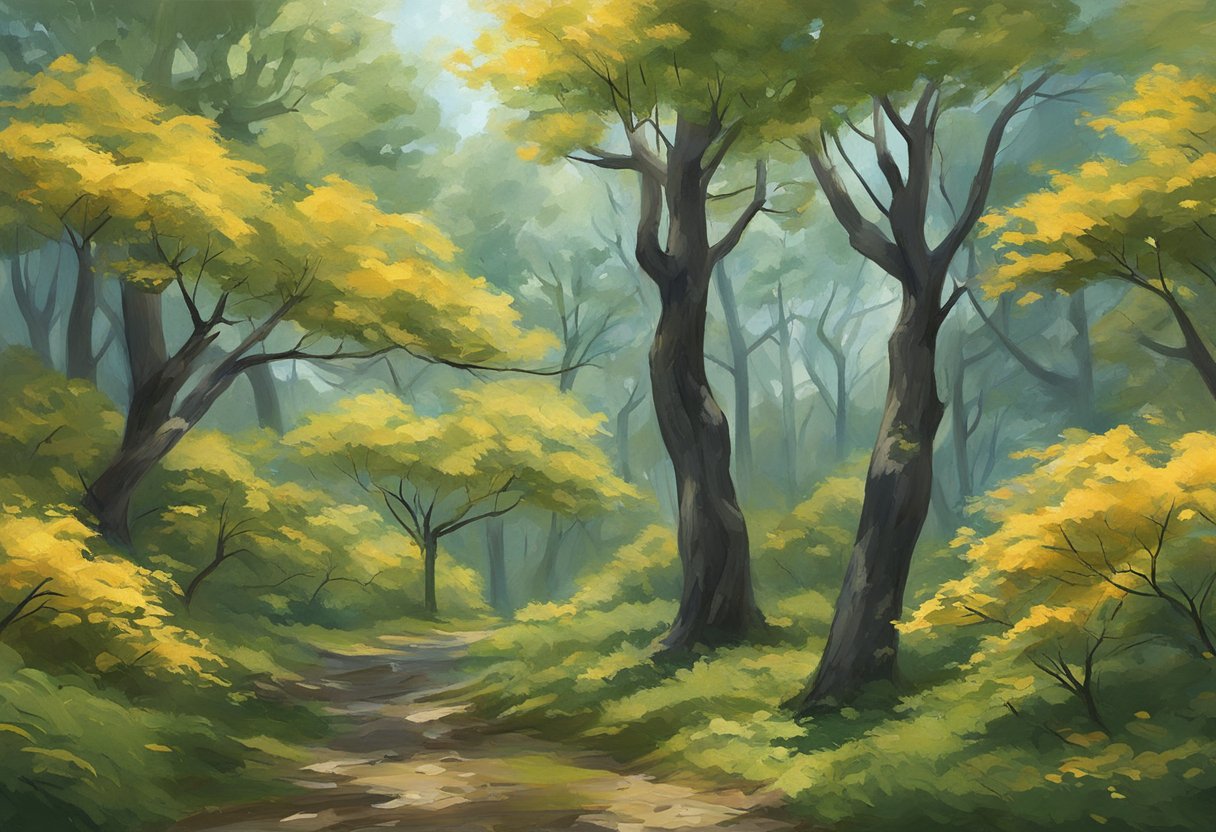
Weather is an essential aspect of storytelling, and it can be used to set the tone and create atmosphere in a narrative. A skilled writer can use weather to enhance the setting, evoke emotions, and convey symbolism and themes. This section will explore the role of weather in narrative, with a focus on its impact on atmosphere, symbolism, and themes.
Creating Atmosphere
Weather can be used to create a mood or atmosphere that reflects the tone of the story. For example, a stormy night can create a sense of foreboding or danger, while a bright sunny day can create a feeling of happiness or joy. The writer can also use weather to reflect the emotions of the characters. For instance, a sunny day can reflect the happiness of a character, while a rainy day can reflect their sadness or gloom.
Symbolism and Themes
Weather can also be used to convey symbolism and themes in a narrative. For example, a storm can symbolize chaos or conflict, while a calm day can symbolize peace or serenity. The writer can also use weather to reflect the themes of the story. For instance, a story about renewal and rebirth may feature a spring rain, while a story about death and decay may feature a winter storm.
In conclusion, weather is a powerful tool that writers can use to enhance their storytelling. By using weather to create atmosphere, convey symbolism, and reflect themes, writers can create a more immersive and engaging narrative.
Descriptive Language and Techniques
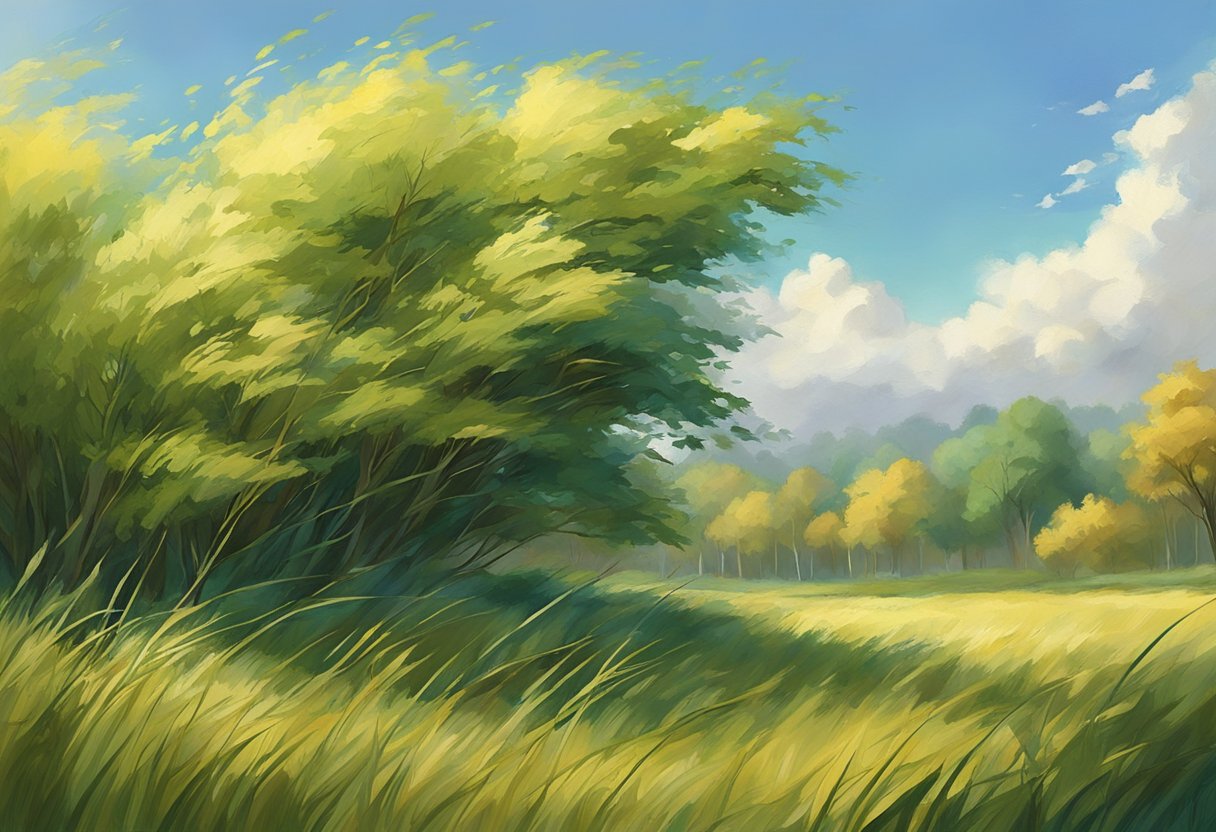
Descriptive language is an essential tool for writers who want to create vivid and engaging descriptions of wind. This section will explore some of the most effective techniques for describing wind, including the use of adjectives and adverbs, similes and metaphors, and master lists for writers.
Using Adjectives and Adverbs
Adjectives and adverbs are two of the most important parts of speech when it comes to describing wind. Adjectives are words that describe nouns, while adverbs describe verbs, adjectives, and other adverbs. When describing wind, it is important to choose adjectives and adverbs that accurately convey the speed, direction, and force of the wind.
For example, writers might use adjectives like “strong,” “gentle,” “fierce,” or “blustery” to describe the wind’s intensity. Adverbs like “swiftly,” “forcefully,” “gently,” or “erratically” can be used to describe the wind’s movement.
Employing Similes and Metaphors
Similes and metaphors are powerful tools for writers who want to create vivid and memorable descriptions of wind. A simile is a comparison between two things using “like” or “as.” A metaphor is a comparison between two things without using “like” or “as.”
For example, a writer might describe the wind as “howling like a pack of wolves” or “whipping through the trees like a tornado.” These similes help readers to imagine the sound and movement of the wind in a more visceral way.
Metaphors can also be used to describe wind more abstractly. For example, a writer might describe the wind as “a restless spirit” or “an invisible force.” These metaphors help to convey the power and unpredictability of the wind.
Master Lists for Writers
Finally, master lists can be a helpful resource for writers who want to create more varied and nuanced descriptions of wind. These lists might include synonyms for common adjectives and adverbs, as well as more specialized vocabulary related to meteorology and weather patterns.
For example, a writer might consult a master list to find alternative words for “strong” or “gusty,” such as “blustery,” “tempestuous,” or “squally.” These lists can help writers to avoid repetitive language and to find more precise and evocative ways of describing wind.
Types of Wind and Their Connotations
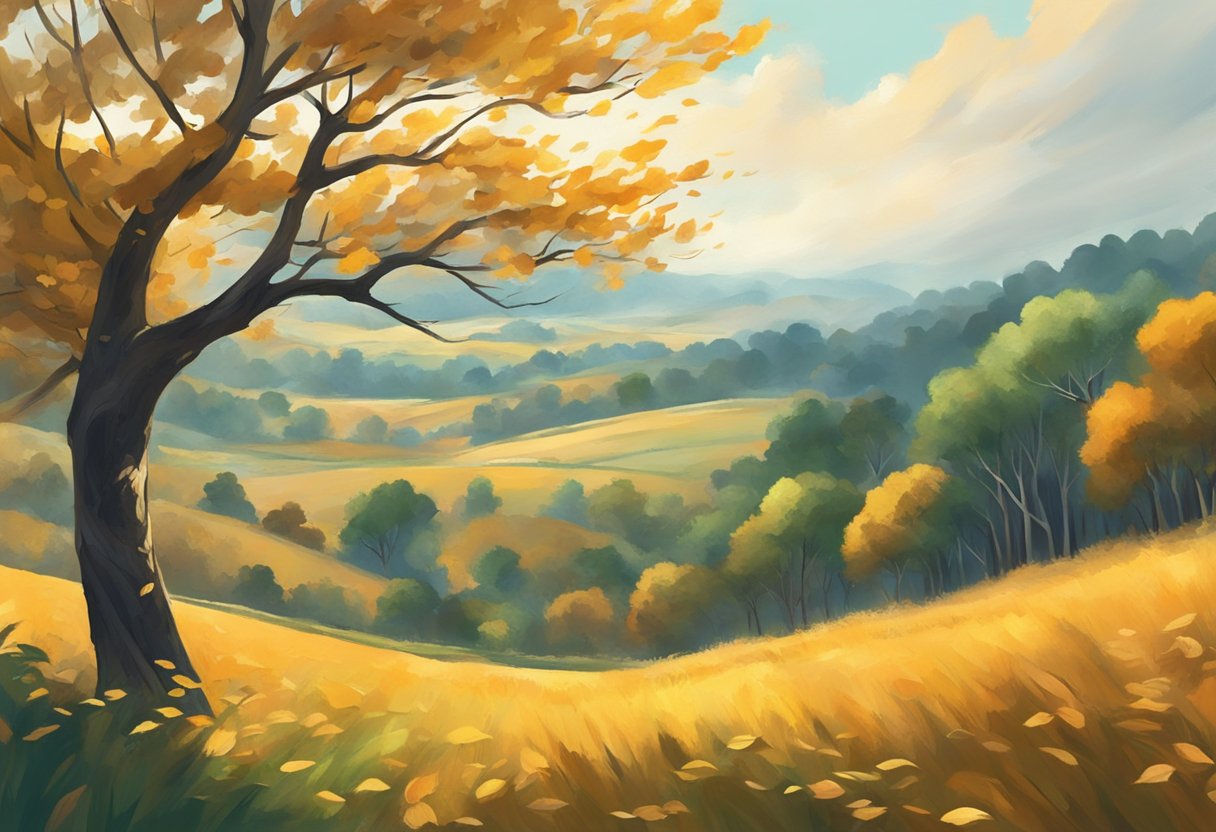
From Breeze to Gale
Wind can range from a gentle breeze to a powerful gale, and each type of wind carries its own connotations. A breeze is a light wind that can be refreshing and pleasant, while a gust is a sudden, strong burst of wind that can be startling. A strong wind, such as a gale, can be destructive, causing damage to buildings and trees.
The force of the wind can also affect its connotation. A gentle breeze can be calming and peaceful, while a strong wind can be chaotic and unsettling. In literature, the wind is often used as a metaphor for change or turbulence, and the strength of the wind can reflect the intensity of the situation.
The Impact of Extreme Weather
Extreme weather conditions, such as hurricanes, blizzards, and tornadoes, can cause significant damage and have a lasting impact on people and communities. These types of wind are often associated with danger, destruction, and chaos.
A hurricane is a powerful tropical storm that can cause flooding and destruction, while a blizzard is a severe snowstorm that can cause travel disruptions and power outages. A tornado is a violent windstorm that can cause significant damage to buildings and homes.
In literature, extreme weather can be used to create tension and suspense, as characters struggle to survive in dangerous conditions. The connotations of extreme weather are often negative, reflecting the destructive power of nature.
Overall, wind can carry a variety of connotations, depending on its strength and the weather conditions in which it occurs. Whether it is a gentle breeze or a powerful hurricane, wind can have a significant impact on the world around us.
Incorporating Sensory Details
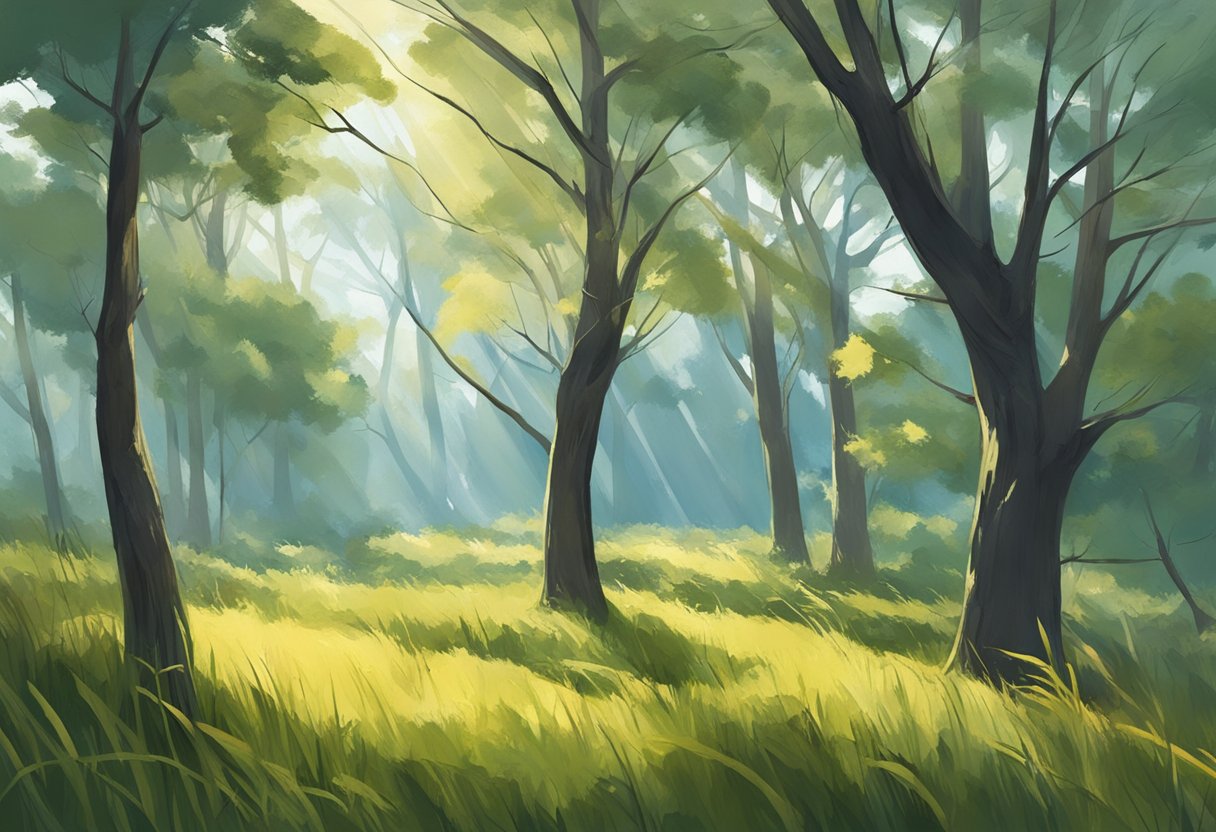
When describing wind, incorporating sensory details can help bring the reader into the scene and make the experience more immersive. The following subsections will cover different sensory details that can be used to describe wind.
The Feel of Wind
Describing the feel of wind can be done in a variety of ways. For example, if the wind is strong, it may feel like a force pushing against the skin. On the other hand, a gentle breeze may feel like a soft caress. The feel of wind can also be described about other objects, such as how it causes hair or leaves to sway.
Visual and Auditory Descriptions
In addition to the feel of wind, visual and auditory descriptions can also be used to convey the experience. For example, the rustle of leaves or grass can be used to describe the sound of wind. The movement of trees or other objects can also be used to visually depict the wind’s strength and direction.
When describing wind, it is important to consider the different senses and how they can be used to create a more vivid picture for the reader. Using sensory details such as the smell of petrichor or the sensation of wind on the skin can help transport the reader to the scene and make the experience more immersive.
Seasonal and Weather Variations
Winter’s cold to autumn’s whisper.
The wind can have a different feel depending on the season. In winter, the wind can be biting and cold, carrying with it the chill of snow and ice. Describing this wind can be done with words such as “frigid,” “icy,” and “blistering.” In contrast, autumn’s wind can be soft and gentle, whispering through the trees and carrying with it the scent of fallen leaves. Words such as “whispering,” “rustling,” and “murmuring” can be used to describe this wind.
Storms and Calm
Stormy weather can bring with it powerful winds that can knock down trees and cause damage. Describing this wind can be done with words such as “howling,” “roaring,” and “blustering.” On the other hand, calm weather can bring with it a gentle breeze that can be described with words such as “caressing,” “soothing,” and “gentle.”
In foggy weather, the wind can feel damp and heavy, carrying with it the moisture of the fog. This wind can be described with words such as “damp,” “heavy,” and “moist.” Sleet and freezing rain can also be carried by the wind, making it feel cold and biting. Words such as “piercing,” “stinging,” and “sharp” can be used to describe this wind.
In warm weather, the wind can feel refreshing and invigorating, carrying with it the scent of blooming buds and the warmth of the sun. Words such as “invigorating,” “refreshing,” and “balmy” can be used to describe this wind.
Overall, there are many ways to describe the wind depending on the season and weather conditions. By choosing the right words, a writer can effectively convey the feeling and atmosphere of the wind to their readers.
Latest posts

Achieving Your Word Count Goals with Daily Sprints: A Guide
Many writers struggle with meeting their word count goals, whether it’s for a school assignment, a blog post, or a novel. It can be frustrating to stare at a blank page or screen and feel like you’re not making progress. However, there is a technique that can help you achieve your word count goals and…

Beat Burnout: Setting Reasonable Writing Expectations
Writing can be a fulfilling and rewarding experience, but it can also be exhausting and draining. Writing burnout is a real phenomenon that can affect anyone, from professional writers to students. When writers push themselves too hard, they can experience stress, lack of motivation, and even physical symptoms like headaches and fatigue. To avoid burnout,…

Dealing with Criticism and Rejection as an Author: Tips and Strategies
As an author, receiving criticism and rejection is an inevitable part of the writing process. It can be difficult to navigate the emotions that come with having your work scrutinized, but it’s important to remember that criticism and rejection are not personal attacks. Instead, they are opportunities for growth and improvement. One way to deal…

31 Ways to Better Describe the Wind in Your Writing
By: Author Hiuyan Lam
Posted on Last updated: October 20, 2023
Categories Vocabulary Boosters

As a writer, you’ll have to find the most unique and effective words to describe every emotion, sight and general experience you are trying to convey to your readers. Sometimes, you’ll even need words to describe wind to refer to certain characteristics such as temperature, force and sound.
In other instances, the words to describe wind can be used in a way to describe how it feels on a character’s skin or how other people react to the wind. We are sure you are good at what you do, but a good writer is always looking for ways to improve his/her craft.
Here are 31 examples of words to describe wind that can better express yourself to your audience:
What is the wind like in your writing?
Before we get to the words to describe wind, let us first establish what the wind is like in your writing. What we mean by that is what is the force of the wind? Wind is always moving air, but it can be gentle, such as a light breeze, or violent, as in a hurricane or tornado. The first thing you should do is establish the force of the wind. The force of the wind is measured in knots on the Beaufort Wind Scale and is further described by the effect it has on the surroundings. The most common terms include:


You May Also Like:
35 Words to Describe a Forest Well in a Novel
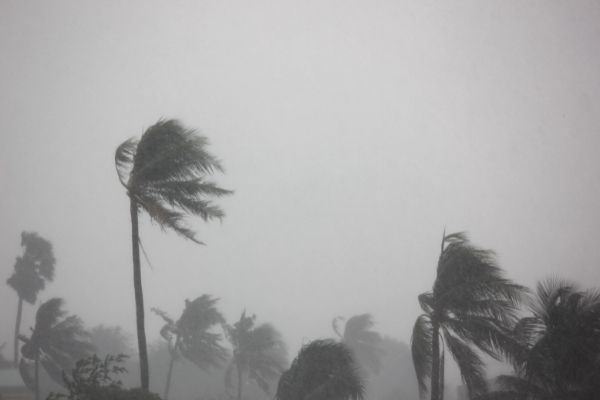
Tornadoes are not included on this scale, but it is understood that they are characterized by violent wind speeds. Tornadoes are instead measured on the Fujita Tornado Scale. This scale begins with an intensity of F0 called a Gale Tornado. A gale tornado measures 35-62 knots and causes minimal damage, inclusive of damage to signboards, shallow-rooted trees, TV antennas, chimneys and windows. At the end of the scale is F6, otherwise called the Inconceivable Tornado . These winds are extremely unlikely as they range between 277-329 knots, and would level houses, remove houses from foundations, overturn and throw automobiles including trains, throw steel and concrete missiles, and in general cause catastrophic damage. This would typically be used in fictional pieces if you want to describe an apocalyptic event. Feel free to browse the rest of the Fujita Tornado Scale for more details. You may have also heard of a wind gust. This describes a sudden, brief increase in wind speed. This can be especially dangerous due to their unpredictable nature and strength.
How to describe wind
After analyzing that list, you should be able to find which scientific word matches what you have in mind. Now, you need some other descriptive words to describe wind to supplement it and really drive home what you’re trying to convey. Let’s start with these 15 words to describe wind:
Words to describe wind by temperature
Temperature describes how hot or cold something is. Here are some descriptive words to describe wind based on temperature:
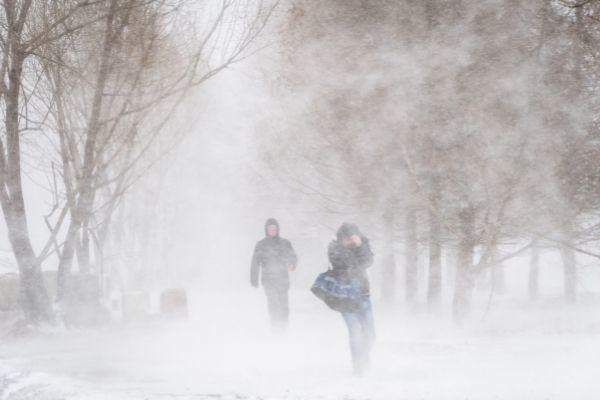
For example: “Eric wiped the sweat from his brow and returned his glasses to his face, wishing he had remembered to pack his balaclava to brave the dry winds in the hot desert.”

Words to describe wind by force
Force describes the intensity or strength of the wind. Here are some words to describe wind based on force:
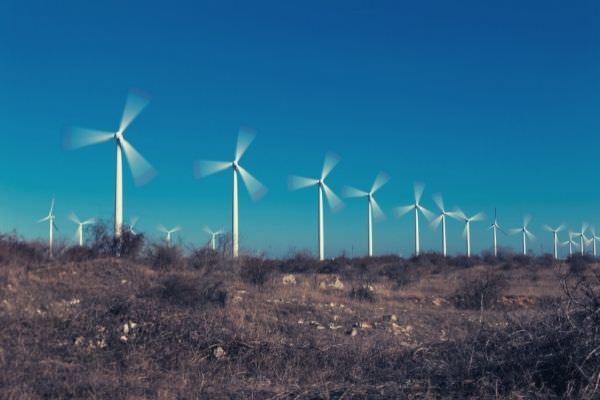
20 Examples of Words to Describe a Laughter in Different Scenarios
Words to describe wind by sound
When there is a strong enough wind, you will hear it. Here are some words to describe wind and what it sounds like to you or the characters:
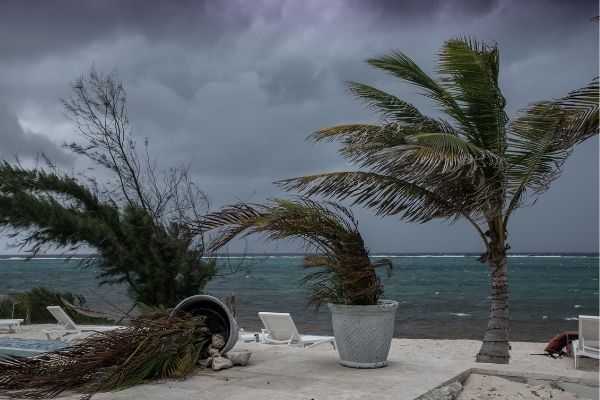
Examples of sensory descriptions to describe the winds
Now, let’s describe the wind from another angle. Let’s use words to describe wind based on our senses, or how people react to it. Here are 16 examples:
By the feeling on your skin
Wind doesn’t always feel the same when it touches your skin. Think about it, does the hot air feel the same as a cool breeze? Not at all. These are some words to describe wind and how it appeals to the sense of touch:
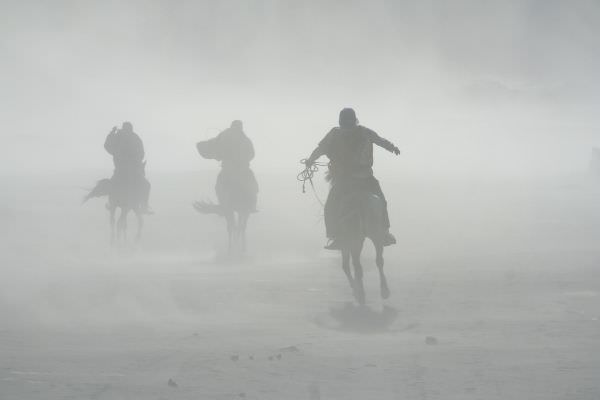
25 of the Best Words to Describe a Bad and Toxic Relationship
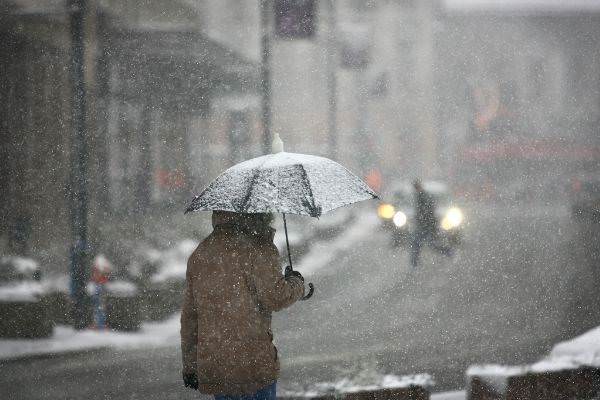
How to describe the wind by how people react to it
When the wind contacts our skin, it can evoke different feelings and reactions. Here are some words to describe wind based on how people react to it/feel:

There are many more words to describe wind that you’ve probably never even thought of using before. You just have to be more creative, especially when writing. Which words to describe wind are you going to use first and have you thought of any yourself?

BRYN DONOVAN

tell your stories, love your life
- Writing Inspiration
- Semi-Charmed Life
- Reading & Research
- Works In Progress.
Master List for Describing Weather
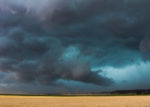
A lot of writers struggle with describing settings. I’ve written before about how to describe settings and why it matters , but a few people have told me they’d like me to do some of my master lists for writers to help them out!
I have a weird love for creating lists like this, so I’m happy to do it. “How to describe weather” seemed like a good place to start. This way, you won’t get stuck trying to figure out how to describe nice weather, or thinking up ways to describe rain. Hopefully, this will make your writing go faster.
I always include simple as well as more creative ways to describe or write about weather. Sometimes, the simple word is the one you want! I included dryness and humidity in a few of the categories because it felt weird for them to get their own.
As always, this is not a comprehensive list, and I might add to it. My list will probably make you think of other possibilities, too. Bookmark or pin it for future writing reference!
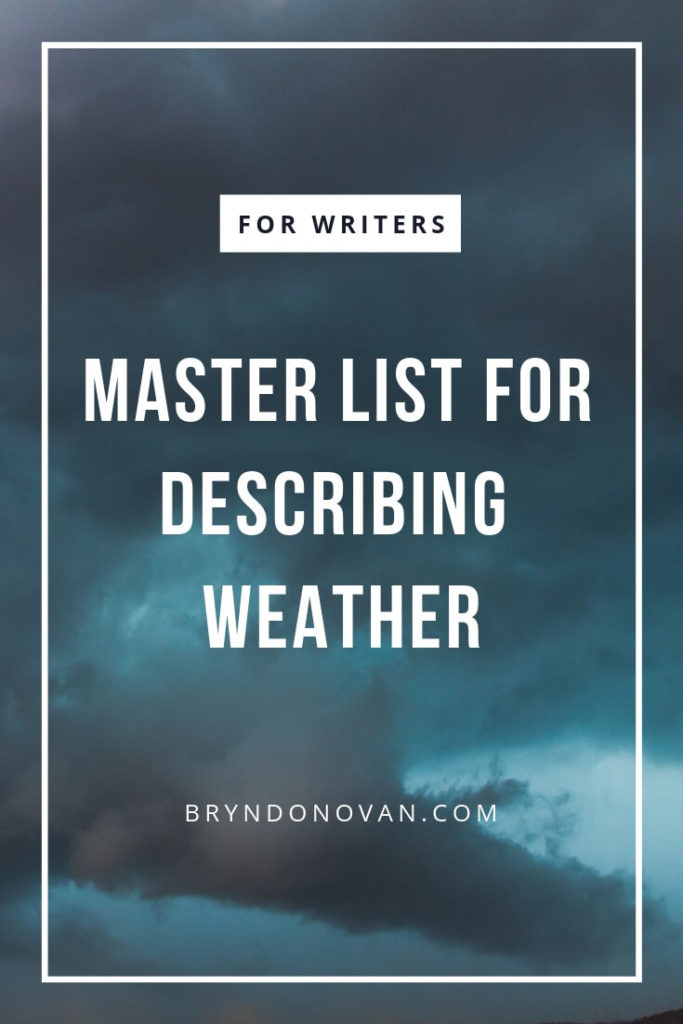
HOT WEATHER

blazing sunshine
glaring sun
baking in the sun
sun-drenched
scorching heat
extravagant heat
relentless sun
like a suana
dense tropical heat
radiating heat
blistering heat
oppressive heat
insufferable heat
suffocating heat
heat pressing down
searing sun
shimmering heat
like an oven
like a furnace
WARM / PLEASANT WEATHER

(“Pleasant” is a matter of opinion, of course.)
a beautiful day
a clear day
a temperate day
a golden day
a glorious day
heavenly weather
bright and sunny
a gorgeous spring day
a dazzling summer day
a brilliant autumn day
a vivid blue sky
a cloudless sky
fluffy white clouds
gentle sunshine
lazy sunshine
kind sunshine
filtered sunlight
dappled sunlight
welcome warmth
one of those rare, perfect days
the kind of day that made people forget to worry
the kind of day that lifted people’s moods
COOL WEATHER

refreshing air
stimulating cool air
invigorating cool air
bracing cool air
a nip in the air
a brisk day
a chilly day
weak sunshine
GRAY / OVERCAST WEATHER

(Most people don’t like gray days, so most of these descriptions are negative. I love them, so I had to add a few positive descriptions.)
colorless sky
a soft gray sky
a dove-gray sky
a gray day made for books and tea
steel-gray sky
granite sky
cement-gray sky
threatening clouds
foreboding clouds
COLD WEATHER

glacial air
bitter cold
brutal cold
bone-chilling cold
penetrating cold
devastating cold
numbing cold
punishing cold
dangerous cold
unforgiving cold
too cold to talk
so cold it burned one’s lungs
so cold it took one’s breath away

like a blast from a hair dryer
a gust of wind
insistent winds
heavy winds
strong winds
cutting wind
whipping winds
biting wind
wintry squall
violent gale
howling wind
shifting winds
restless wind
fresh breeze
soft breeze
balmy breeze
perfumed breeze
slight breeze
hint of a breeze
stirring breeze
wind rustling through the trees

fine drizzle
gray drizzle
pebbles of falling rain
spitting rain
stinging rain
steady rain
rain falling in torrents
cascades of rain
rain beating down
shower of rain
sheets of rain
hard-driving rain
pelting rain
lashing rain
slashing rain
THUNDER AND LIGHTNING

rumbling in the distance
a roll of distant thunder
crash of thunder
crackle of thunder
crack of thunder
clap of thunder
bang of thunder
booming thunder
rattled with thunder
earth-shaking thunder
tempestuous
a furious storm
flash of lightning
streaks of lightning
SNOW AND ICE
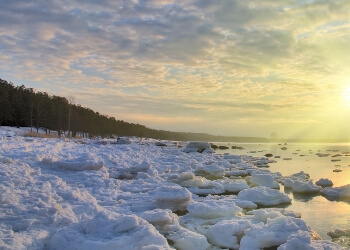
flurries of snow
dancing flakes
snowflakes floating down
snowflakes wafting down
swirling snow
falling thick and fast
big flakes falling like petals
blinding snowstorm
raging blizzard
sparkling expanses
blankets of white
caked with snow
boulders of snow
branches coated in ice
glittering ice
crystallized by frost
silvered with frost

clouds of mist
swirling mist
billowing fog
cloaked in mist
cocooned in fog
shrouded in fog
enveloped by fog
smothered by fog
made mysterious by fog
the fog rolled in
the fog was burning off
the fog was lifting
the fog was clearing
the fog was dissipating
I have many lists like this in my book Master Lists for Writers: Thesauruses, Plots, Character Traits, Names, and More . Check it out!

Do you describe weather conditions in your writing? Do you have a favorite example of a weather description? Let me know in the comments! Thanks for reading, and happy writing!
[spacer height=”20px”]
Related Posts
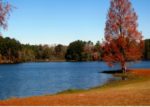
Share this:
21 thoughts on “ master list for describing weather ”.
In my current WIP, weather is a crucial element. Not only is the woman in the romance a professional photographer — of weather — but it is a weather phenomenon, namely a tornado, that brings them together. So the description of the sky and the weather is quite detailed in places (specially as the supercell storm roars down on them).
On another angle, the phrase “gloriously sunny” is one that despite having that horrible “ly” adverb (shudder) is so evocative of the type of weather and the POV character’s attitude (and possibly even the type of weather that has gone before), that it’s powerful. It says a huge amount with only two words.
Hi Chris! Oh, wow…that’s a lot more detailed than most of us ever get in writing about the weather. It sounds like a great premise!
I will need this list as I begin edits next month on my WIP. I currently live in Hawaii, but am writing a story at Christmas time in Vermont. 🙂 Thank you!
Aw, nice! That’s some very different weather from what you’re used to. 🙂
It really is! And traveling to the climate I need isn’t ideal right now. So, off to the freezer I go! 🙂
Wow! This is fantastic. Thanks. You ARE a master at this.
- Pingback: Master List for Describing Weather – Written By Bryn Donovan – Writer's Treasure Chest
This is comprehensive! It’s bookmarked for future use. Thanks!
Thanks, Steve, I’m glad you liked it!
Amazing list that goes beyond the words that I struggle with – especially describing the rain-painted setting of Snowdonia.
Love your lists. You don’t have one for beaches by any chance? Would this, including the weather be another book by any chance??
Hi, Nicole! It’s funny you should ask. 🙂 I am going to release a second, more expanded version of MASTER LISTS FOR WRITERS . It’s going to have several setting descriptions in there (including a whole list for beaches!), and the weather list will be in there, too! I’m hoping to get it done before November of this year, but we’ll see. Thanks for asking!
That’s awesome and look forward to it’s release.
- Pingback: ? Writing Links Round Up 7/1-7/5 – B. Shaun Smith
- Pingback: How to Write a Novel: Resources - MultiTalented Writers
- Pingback: ? Writing Links Round Up 8/19-8/23 – B. Shaun Smith
I am in Chinan. I happened to enter this web-link and want to learn more about writing, I wonder if there are any descriptive passages. I can only find some words and expressions…
That was really useful. Thank you!
- Pingback: The Power of Vision in Writing | Writers In The Storm
This list is fabulous. Thank you for sharing it. I will be consulting it when incorporating weather elements into writing my next picture book.
- Pingback: How’s The Weather In Your Story? – Writer's Treasure Chest
Leave a Reply Cancel reply
This site uses Akismet to reduce spam. Learn how your comment data is processed .
Discover more from BRYN DONOVAN
Subscribe now to keep reading and get access to the full archive.
Type your email…
Continue reading
KathySteinemann.com: Free Resources for Writers and Poets
Word lists, cheat sheets, and sometimes irreverent reviews of writing rules. kathy steinemann is the author of the writer's lexicon series..

More Than 300 “Wind” Words: A Word List for Writers

Environmental Ambience Adds Depth to Writing
Do you take advantage of it?
The opening paragraph of Edward Bulwer-Lytton’s novel Paul Clifford reads in part:
“It was a dark and stormy night; the rain fell in torrents, except at occasional intervals, when it was checked by a violent gust of wind which swept up the streets … rattling along the house-tops, and fiercely agitating the scanty flame of the lamps that struggled against the darkness.”
Lytton’s words provide an atmosphere unlike what you’d expect on a sunny day. The chapter progresses, painting a desolate word-picture of a man searching for something in the gloom. The weather infuses the opening with emotion: a premonition that unpleasant events are about to unfold.
Beware overplaying the weather card, though. Readers will lose interest, especially if you rely on words they don’t understand.
Consider This Passage
Danny wasn’t looking forward to the suspension of door-to-door delivery. He had been a mail carrier for almost forty years, and he enjoyed his job.
This passage is pure tell. Although you might want to write something similar for micro fiction, the paragraph reads like a laundry list.
Almost forty years as a mail carrier, and now the big dogs at the top of the food chain intended to suspend door-to-door delivery. No more sunny days with a gentle wind in Danny’s face , no more tantalizing aromas from the corner bakery wafting into his nostrils. Heck, he’d even miss the wet-dog smell on days when the wind drove rain into every crevice and crack.
The second paragraph dips into show, referring to management in a deprecatory fashion, and contrasting Danny’s pleasant days with the not-so-pleasant by inclusion of wind and how it affects him.
What About This One?
North, south, east, or west. Which way should she go? Cassandra crouched inside the garage until the drones were gone.
How does Cassandra know the drones are gone? Although the paragraph does provide some suspense, it could improve.
North, south, east, or west. Which way should she flee? Cassandra crouched inside the drafty garage, shivering in her scanty rags, waiting, listening. The wind wailed outside, almost drowning the whirr of the search drones. She waited until all she could hear was a gentle breeze coaxing snow through the crack beneath the door.
The words flee and search add detail. Now we know Cassandra isn’t playing a game with neighborhood kids. The wind wails when she’s in danger and turns into a gentle breeze after the peril disappears.
Examples You Can Grab as Story Prompts
Note how weather augments each of the following scenes and provides a backdrop that steers readers toward an emotional response.
The fangs of the wind ripped at Wendell’s cloak. He braced against the onslaught, shouldering into the storm with fierce determination. Nothing would dissuade him from the grim task awaiting him this evil night.
A few key words, fangs, ripped, onslaught, grim, and evil , show that something unpleasant is afoot.
Puffy clouds — cotton balls in a blue sky filled with hope and cheer — billowed in the wind. Roxanne banked her anti-grav unit left at Causeway H-40.
She cursed .
This scene starts optimistic with words such as puffy, cotton balls, blue sky, hope , and cheer . We see a happy Roxanne.
Then she curses. Why? Does she collide with another anti-grav? encounter a traffic jam? see someone she doesn’t expect or want to see? Could you precede her curse with a thunderclap? a gale that steers her off course? the sight of a twister in the distance?
A ruthless gale hammered at the cliffs and churned the sea into a narrow channel. One bedraggled sail peeked out through a valley between two mountainous waves.
The grizzled lighthouse keeper bowed his head in silent prayer.
This excerpt bestows personality on the wind with ruthless , and likewise on the sail with peeked . Can you see the churning sea and bedraggled sail?
- Temperature Words
- Onomatopoeic Sound Words
- Other Ways to Say “Sigh”
- Ways to Say “Noisy” or “Loud”
- Ways to Say “Cried”
- Water Words
Adjectives to Describe Wind
A to C aggressive, alee, aweather, angry , Arctic, arid, biting, bitter, bleak, blustery, bracing, breezy, brisk, brutal, brutish, carefree, ceaseless, chilly, churning, constant, continual, cruel, cutting
D to G damp, darting, driving, dry, dusty, east, easterly, energizing, evil, exhilarating, fair, feeble, feral, ferocious, fierce, foul, freezing, gale-force, gentle, gusty
H to L harsh, high-pitched, hissing, hostile, hot, howling, icy, inexorable, inhospitable, inhumane, intense, intermittent, invigorating, keen, keening, light
M to O merciless, mighty, moaning, moist, murmuring, nasty, never-ending, nippy, north, northerly, offshore
P to R parching, penetrating, perpetual, persistent, piercing, potent, powerful, probing, quiet, raging, raw, refreshing, relentless, remorseless, robust, roiling, ruthless
S sandy, savage, scorching, severe, sharp, shrill, sighing, slight, smoggy, smoky, soft, sooty, south, southerly, spirited, squally, steady, stiff, stimulating, stinging, sudden
T to Z turbulent, unexpected, unrelenting, untamed, vicious, vigorous, violent, wailing, weeping, west, westerly, wet, whipping, whispering, whistling, wild, wintry, zesty
Verbs and Phrasal Verbs That Show Wind Movement and Activity
A to C assail, assault, attack, batter, beat (against), billow, bite (into), blast, blow, bluster, breathe, burst (through), carry, channel, chill, churn, creep
D to H drift, drive (into, through), drone, eddy, erode, fan, flagellate, flay, fling, float, flog, flow, force, freeze, gasp, glide, grab, gust, hammer, harangue, huff, hurl
I to R impel, judder, keen, lament, lash, melt, moan, murmur, overcome, pound, propel, puff, pummel, punish, push (into, through), rage, rattle, roar, rush, rustle
S to V scream, sculpt, seethe, seize, shake, shoot, sigh, sough, spin, squall, sting, stream, surge, sweep, swirl, swish, swoosh, take , thaw, thrash, thrust, vibrate
W to Y waft (around, through), wail, wander, warm, wheeze, whine, whip, whirl, whisk, whisper, whoosh, worm, yowl
Nouns That Can Refer to, Replace, or Be Affected by Wind
B to D bearing, Beaufort scale, blast, blizzard, bora, breeze, bubbles, burst, cape, chinook, cloudburst, current, curtains, cyclone, dandelion fluff, deluge, direction, downpour, draft, dust
E to H energy, erosion, fan, fireflies, flag, flow, flurry, flying carpet, force, Frisbee, gale, generation, generator, glider, gnats, grit, gust, hail, hailstorm, hair , headwind, hot-air balloon, hurricane
K to R kite, leaves, might, mistral, movement, onslaught, paper airplane, parachute, pinwheel, pollen, power, propeller, protection, rain, resistance, rotor, rush
S and T sail, sailboat, shawl, shear, shelter, shower, simoom, sirocco, sleet, smog, smoke, snowstorm, speed, storm, strength, tailwind, tempest, thunderstorm, tornado, trade wind, turbine, twister, typhoon
V to Z velocity, vigor, weather balloon, weather vane, whirlwind, wind tunnel, wind-chill factor, windmill, windstorm, windsurfing, zephyr
Are You Interested in More Word Lists and Writing Tips?
If you haven’t done so already, please subscribe to my blog . (The link will take you to the subscription widget at the top left of this post.)
I usually post two to five times monthly, and you can discontinue your subscription at any time.
Please don't be shy. Leave a reply. Cancel reply
Your email address will not be published. Required fields are marked *
Save my name, email, and website in this browser for the next time I comment.
Notify me of new posts by email.
6 thoughts on “ More Than 300 “Wind” Words: A Word List for Writers ”
Kathy, Love the information you share. I plan to tell my writer’s group about you and your blog in our “favorite web site” session.
Thanks, Linda.
Do you have any word pests you’d like me to research?
Thank you. This was very helpful and informative.
Thanks, Charlene. I hope to have the book ready to publish soon. It contains expanded versions of these lists.
Bookmarking for a future revision. Thank you!
Thanks, David. Next week: Em Dash Abuse—It Ain’t Pretty.

The Top 10 Descriptive Paragraphs About The Wind
Written by Dan
Last updated March 5, 2024
Descriptive writing is an art form, and bringing the senses to life on paper can be tricky. Let’s make things easier for all of you teachers needing some descriptive paragraph examples with this post on ‘The Top 10 Descriptive Paragraphs About The Wind’.
Here we will provide some tips that help create effective and powerful paragraphs that your students can use!
Most importantly, we’ll explore tangible ways to bring alive the concept of wind with vivid descriptions. Don’t just settle for ‘it was windy’ – follow along as we push away boring writing and discover how to take readers into the whistling breeze.
Related : For more, check out our article on Descriptive Paragraphs About The Queen here.
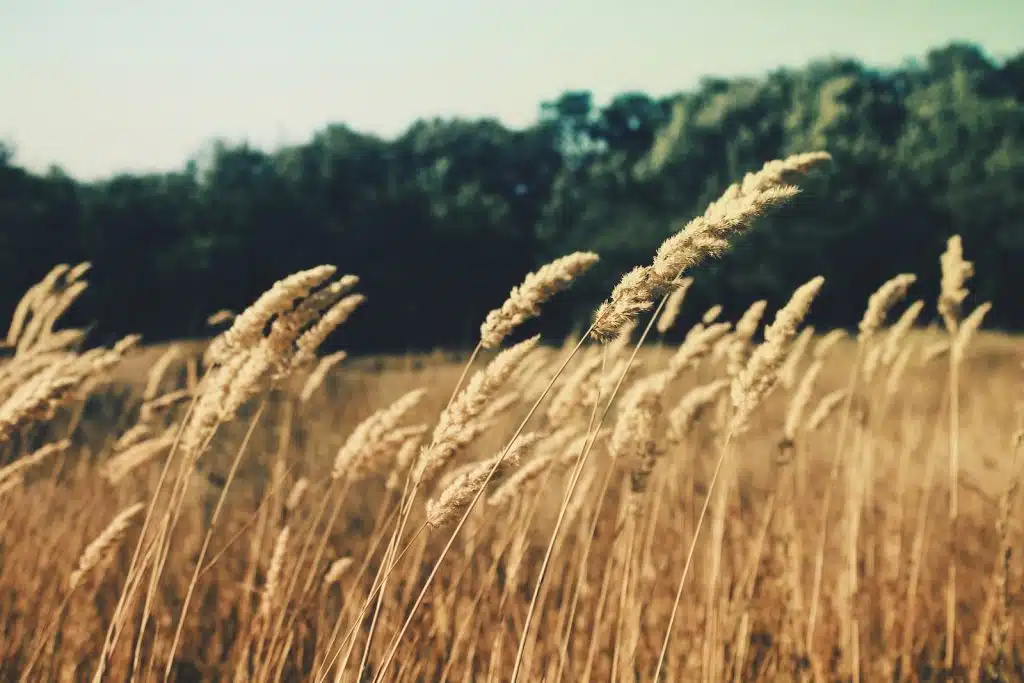
Table of Contents
1. The Whispers of the Wind
Have you ever paused in your day, just for a moment, to truly listen to the wind? It’s more than just a simple force of nature. It’s an ageless storyteller, reminiscent of a wandering bard from the annals of medieval times. Can you hear it? It murmurs tales to those who are willing to lend an ear, spinning rich yarns of ancient lore and far-off lands, stories that have traveled across time and space.
As the wind weaves its way through the emerald leaves of towering trees, it creates a symphony of sound that could rival even the most prestigious orchestra. Each swoosh, each rustle, serves as a note played by unseen musicians, a melody that only Mother Nature herself could compose.
Imagine, if you will, that the air around us transforms into a grand concert hall, filled with the fragrance of fresh earth and blossoming flowers. This scent, this perfume, is not something you’d find bottled on a store shelf. No, it’s a unique fragrance crafted by the wind itself, a testament to its power and influence.
The wind’s olfactory symphony is a sensory experience, a fragrant reminder of the world around us. Every gust carries the smell of pine from remote forests, the salty tang of distant oceans, the sweet aroma of wildflowers from a meadow you’ve never seen. These scents tell a story, painting a vivid picture of landscapes far beyond our immediate surroundings.
This invisible and untouchable aspect of our environment, the wind, carries with it the untold stories of our world. It’s a living history book, always turning its pages for those keen enough to stop and listen. So next time the wind brushes against your skin, take a moment to listen to its tales. You may be surprised by what you learn.
This table offers a range of literary devices that can be used to enhance descriptive writing about the wind, each with a purpose and an example that can be adapted for your article.
2. The Wind’s Mighty Roar
Then there are moments when the wind takes on a different character, becoming as fierce and untamed as a lion in the wild. It sweeps across the open plains with an audacity that is awe-inspiring, its invisible force sculpting the landscape in ways that no human hand could replicate. It howls and growls, its voice echoing through the valleys and mountains, carrying with it the raw power of nature. Each gust is like a thunderous applause in an amphitheater, a testament to the wind’s unbridled strength and the respect it commands.
When the wind roars, it’s like a lion in full regalia – powerful and proud. It takes no prisoners as it rips through the countryside, reclaiming what is rightfully its own. Buildings are mere obstacles in its path; trees bend and sway at its will, their branches reaching out to brush against the sky like feathery fingers. The grasses whisper to each other, offering a knowing nod in the wind’s direction.
The wind may be invisible, but its presence is often felt as it barreling through us with an intensity that cannot be ignored. In these moments, we are reminded of our insignificance in comparison to the sheer power of nature. The wind has no fear – only strength and determination. And as it passes, we are left in awe of its beauty and might.
3. The Gentle Caress of the Wind
Just as the wind can roar, it can also be as gentle as a mother’s caress. It brushes against our cheeks with a tenderness that is comforting, a soft and soothing presence that is both familiar and welcome. The wind whispers in our ears, its voice as light as a feather, bringing with it words of comfort and peace. It sings us a tender lullaby, its soft rhythm lulling us into a peaceful slumber, reminding us of the gentle side of nature and its nurturing spirit.
On tranquil days, the wind carries with it a special kind of magic. Every breath of air is like a fresh start – an opportunity to open our eyes and take in the beauty that surrounds us. It fills us with joy, lifting our spirits and propelling us forward into a new day of adventure. The wind is nature’s way of saying ‘come explore’, of beckoning us to find our own paths and create our own stories. It’s a reminder that the world is a beautiful place, a place just waiting to be discovered.
Let the wind guide you, and see where it takes you. Allow its gentle caress to transport you into new realms of possibility, and remember that nature is always with us, ready to offer solace and inspiration.
4. The Wind’s Invisible Dance
The wind is an artist, an invisible dancer that moves with a grace and fluidity that would put the most accomplished ballerina to shame. It twirls and spins around us in an intricate ballet of unseen movements, a performance that enchants and mesmerizes. Each gust is a pirouette, each breeze a grand jeté, a celebration of freedom and joy. This dance of the wind is a testament to the beauty of the natural world, a beauty that exists even when we can’t see it.
We must remember that the wind’s movements are greater than what we can see. It may not be apparent to us, but it is always at work behind the scenes, shaping and transforming the land with each passing breeze. The very air around us bears witness to its power – carrying pollen from distant fields, scattering seeds across faraway meadows, or propelling clouds along the horizon. The wind is a master of change, and its invisible dance shapes our world in ways that could never be discussed or predicted.
From gentle caresses to mighty roars, the wind is an ever-present force in our lives. Its touch can calm us and inspire us, reminding us of the beauty and power of nature. So next time you find yourself feeling lost or overwhelmed, take a moment to stop and listen. The wind will be there, telling its stories and inviting us on the journey of a lifetime.
Books That Discuss the Wind
This table includes a variety of books where the wind is an important motif or aspect of the setting, and can be used in your article to illustrate the diverse ways in which the wind has been incorporated into literary works.
5. The Wind’s Storytelling
Have you ever considered the history the wind carries? It’s a storyteller of epic proportions, spinning tales of distant lands, ancient civilizations, and forgotten times. It carries the voices of the past, echoes of history whispering through the ages. Each gust is a page turned in the book of time, a chapter read from the annals of history, a story told. The stories that the wind tells are as vast as the sky, as deep as the ocean, and as old as the earth itself, a constant reminder of our shared past and the lessons we can learn from it.
The wind is a force to be reckoned with, but it’s also a gentle companion. It whisks us away on its journey across the world, reminding us of our place in the grand scheme of things and inviting us to be part of something bigger than ourselves. When we listen closely, the wind brings us closer to nature – and by extension, closer to each other. So next time you hear the wind calling, stop and listen. Its stories are waiting to be heard.
Who knows where it will take you? Perhaps it will carry you away on a journey of a lifetime – an exploration of the breathtaking beauty and infinite possibilities that nature has to offer. Let the wind guide your way, and see what secrets and stories await.
6. The Wind’s Playful Nature
In its more whimsical moments, the wind can seem like a playful child, reveling in its freedom and the joy of movement. It chases after leaves in a never-ending game of tag among the trees, ruffling feathers and teasing our hair in a gentle game of hide and seek. The wind’s laughter is infectious, its joy and playfulness a reminder of the lighter side of life. It romps and frolics with the carefree spirit of a child, a spirit that we too can embrace if we allow ourselves to be carried away by the wind’s playful nature.
So when the wind blows, take a moment to step outside and let its playful spirit carry you away. Feel it around you, blowing through your hair and caressing your skin with its gentle breeze. Let yourself be swept up in its current, allowing yourself to float along on this wave of energy until you reach an unexpected shore filled with possibilities. The wind is an invitation to explore, a reminder that life is meant to be enjoyed – and who knows where it will take you?
Allow yourself to surrender to its power, and soon enough you’ll find yourself seeing the world from a different perspective. The wind’s playful nature reminds us of the joys of living in the present moment, free from worry and cares.
7. The Wind’s Enigmatic Presence
The wind, like a riddle waiting to be solved, is an enigma. It moves unseen among us, its path unpredictable and its nature ever-changing. It comes and goes as it pleases, a free spirit untamed by man. The secrets of the wind are hidden in its gusts, its riddles whispered in its breezes. Its unpredictability and mystery are a reminder of the many mysteries that still exist in our world, waiting to be discovered and understood.
The wind is a reminder that the world is vast and full of surprises, an ever-changing landscape where anything can happen. Its enigmatic presence reminds us to never stop exploring, to always stay curious and search for answers – even if we don’t have all the pieces of the puzzle. The wind’s mysteries are waiting to be unraveled – who knows what will be revealed?
So next time you feel lost or overwhelmed, remember the wind’s enigmatic presence and let it remind you of the endless possibilities that life holds. Let it carry you away with its gentle caress, inspiring your imagination and reminding you to never give up on searching for answers. The wind will be there, guiding us towards an unknown destination where all our questions can be answered.
Invite the wind into your life, and see where it takes you. Its possibilities are endless, its mysteries waiting to be explored – so why not take a leap of faith and embrace the unknown? Who knows what secrets await just around the corner? The winds of change are blowing – let’s go on an adventure!
8. The Wind’s Serenade
Under the cloak of darkness, the wind serenades the night with a lullaby as beautiful as any nocturne. It rustles through the trees, each leaf acting as a string on nature’s grand harp, creating a melody that soothes the soul. The wind’s song is a symphony of silence and sound, a concert performed for the stars above and the sleeping world below. This nighttime serenade is a testament to the wind’s versatility and its ability to create beauty at any hour.
So next time you find yourself awake in the dark of night, take a moment to pause and listen. The wind will be there, singing its lullaby and inviting you on a peaceful journey through its musical landscape. Sweet dreams await!
So no matter when or where the wind blows, it touches us all – with any luck, carrying us away on the journey of a lifetime. So when you feel the wind against your skin, remember that it’s more than just a gust of air. It’s an invitation to explore, a messenger of history, and a playful companion with stories waiting to be heard. Let the wind guide you on your next adventure – who knows what secrets await?
Until then, may the wind be at your back and the stars in your eyes. Here’s to many stories told and secrets discovered!
9. The Wind’s Healing Touch
The wind is not just an artist or a storyteller; it’s also a healer. It brushes against our skin, soothing our worries and fears. The wind’s touch is a comfort, a balm for our weary souls. It whispers words of reassurance, its voice a soothing lullaby that calms our troubled minds. The healing power of the wind is a reminder of the restorative power of nature, a force that can help us find peace and tranquility in our chaotic world.
So next time you feel overwhelmed by the chaos of life, take a moment to step outside and let the wind’s healing touch envelope you. Feel it around you, blowing away your worries and calming your mind. Let yourself be carried away on its gentle breeze until all that remains is peace and serenity. The wind’s healing power will help restore your body and mind, allowing you to find the strength and courage to keep going.
So let the wind be your guide, and discover its healing power for yourself. It’s a reminder that life isn’t always easy – but with nature’s help, we can make it through anything. So go out there and let the wind carry you away; who knows what new adventures await you?
The wind is a reminder that life is an ever-changing journey, with possibilities waiting to be explored and stories just waiting to be told. So no matter where the wind takes you, remember its strength and resilience – for it will always carry us through any storm. Here’s to many journeys taken and memories made!
10. The Wind’s Eternal Journey
The wind is a traveler, journeying across the globe without ever needing a passport. It traverses mountains and valleys, forests and deserts, oceans and rivers. Each gust is a step forward on its endless voyage, each breeze a new destination. The wind’s journey is a testament to its enduring spirit, a symbol of its unending quest for discovery and adventure. As we feel the wind against our skin, we are reminded of our own potential for exploration and our shared desire to understand the world around us.
So next time you feel the wind, remember its eternal journey and use it to inspire your own. Whether close to home or on a grand expedition, may the wind be at your back as you set off on your own voyage of discovery. Adventure awaits – let’s go explore!
The wind is both an inspiration and a reminder that life can take you anywhere. So why not embrace the uncertainty and let yourself be carried away wherever the wind takes you? Who knows what secrets await just around the corner? The winds of change are blowing – let’s go on an adventure!
So no matter where or when the wind blows, remember its strength and resilience. Be inspired by its journey across time and space, and use it to find your own way in this ever-changing world. Here’s to many journeys taken and memories made!
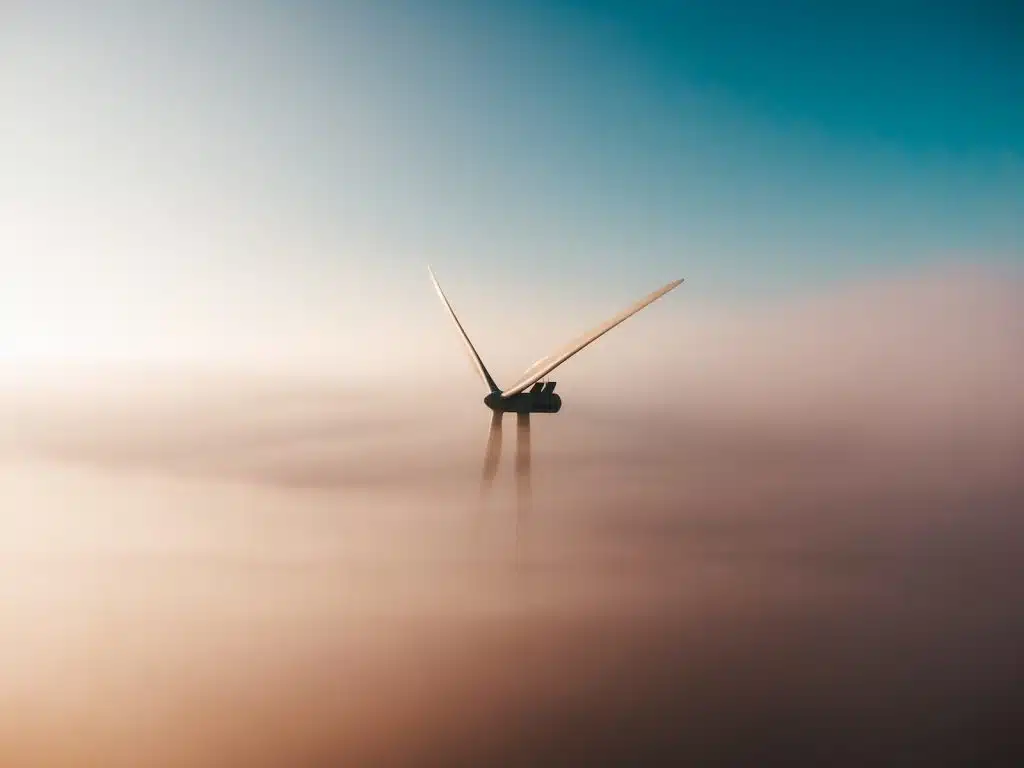
We’ve journeyed through the many facets of the wind, exploring its whispers and roars, its gentle caresses and playful games, its enigmatic presence and healing touch. We’ve reveled in its serenades and admired its eternal journey. In each instance, we’ve sought to bring alive the intangible yet powerful force of the wind through the art of descriptive writing.
The goal here is not just to teach you about the wind, but to inspire you to push your creativity and storytelling skills to new heights. To not just settle for ‘it was windy’, but to paint a vivid picture that brings the readers into the heart of the whistling breeze. To make them feel the wind’s cool touch on their skin, to hear its rustling song in their ears, to smell the earthy scent it carries, and to see the world it shapes with every gust and breeze.
Remember, great writing isn’t just about conveying facts, it’s about engaging the senses, stirring emotions, and sparking the imagination. It’s about transforming a simple concept like the wind into a dynamic character that dances across the pages of your story. It’s about turning the ordinary into the extraordinary.
So next time you or your students sit down to write, remember these examples of how to bring the wind to life. Use them as a starting point, then let your imagination soar like a leaf caught in a gust of wind. Remember, the sky is not the limit, it’s just the beginning. Happy writing!
Related Posts
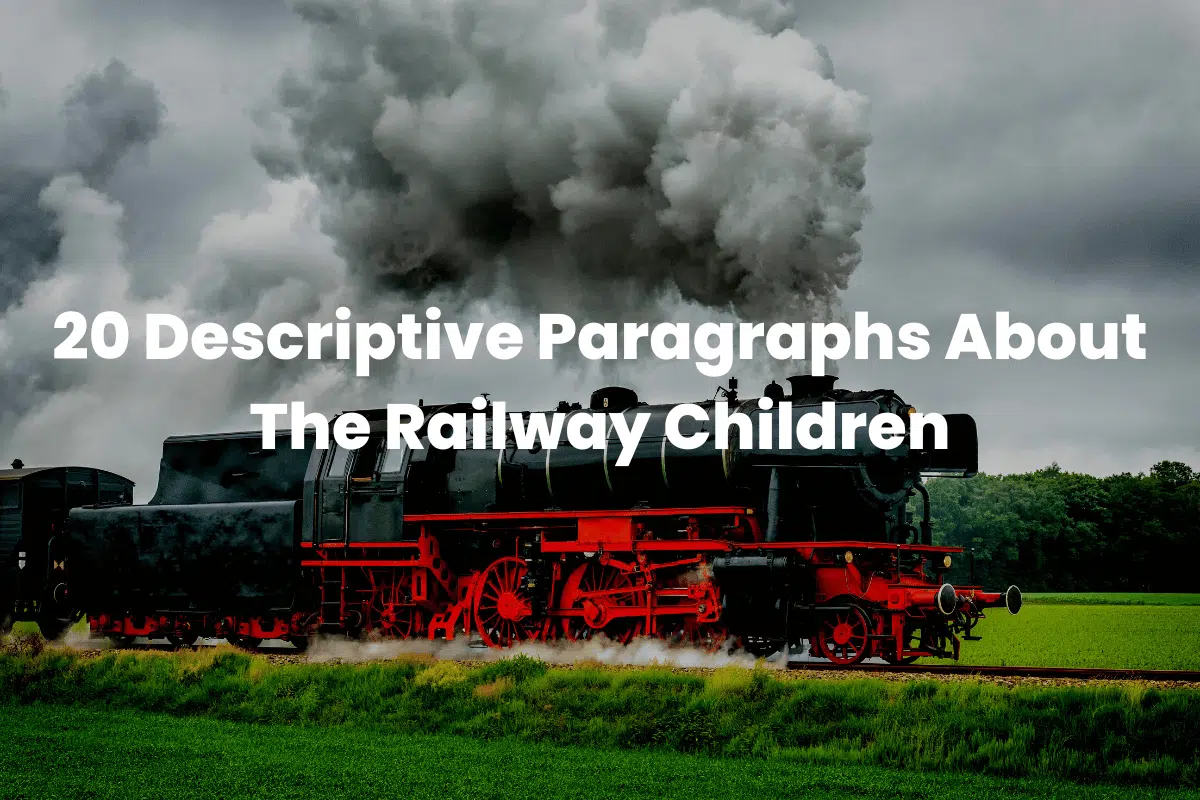
About The Author
I'm Dan Higgins, one of the faces behind The Teaching Couple. With 15 years in the education sector and a decade as a teacher, I've witnessed the highs and lows of school life. Over the years, my passion for supporting fellow teachers and making school more bearable has grown. The Teaching Couple is my platform to share strategies, tips, and insights from my journey. Together, we can shape a better school experience for all.

Join our email list to receive the latest updates.
Add your form here
- Skip to primary navigation
- Skip to main content
- Skip to primary sidebar

WRITERS HELPING WRITERS®
Helping writers become bestselling authors
Setting Description Entry: Forest
August 23, 2008 by BECCA PUGLISI

green, brown, dead fall, fallen trees, logs, branches, twigs, fallen leaves, ferns, underbrush, moss, brambles, thickets, ivy, berry bushes, pine needles, pine cones, acorns, insects, rabbits, birds, squirrels, lizards, mice, foxes, spider webs, deer, sun-dappled, shady, shafts…
Sounds branches creaking, feet shuffling through detritus, squirrels chattering, leaves rustling, wind whistling around trunks/disturbing the leaves, birds singing, insects humming/ churring, rustle of animals rooting in underbrush, scrabbling of lizards on tree bark, limbs..
Smells tree smells (pine, etc), wildflowers, earthy smell, animal scents, rotting wood, fresh, stale, dry, damp, wet, scents on the wind from nearby places (water, wood smoke, ocean), wild mint/herbs, decay (bogs, stagnant pools of water, dead animals), skunks, skunk weed…
Tastes earthy air, sweet/sour berries, nuts, mushrooms, wild onions, seeds, bitter, mint, gritty, mealy, meaty, relish, savor, sample, salty, acidic, sweet, flavorful, sour, tart, flavorless, swallow, mild, nutty, relish…
Touch rough tree bark, kiss of falling leaves, branches slapping, uneven ground, knobby roots underfoot, sticky sap, underbrush that tangles/grabs, prickle of briars, slick leaves, twigs snagging at hair/scratching face, tickle of hanging moss, spider web strands on skin, soft…
Helpful hints:
–The words you choose can convey atmosphere and mood.
Example 1: I lifted my face, letting the light and shadow dance across my skin. Bees hummed in and out of the pennyroyal. I inhaled its minty smell and continued on, delighting in the sound of my feet sliding through the leaves.
–Similes and metaphors create strong imagery when used sparingly.
Example 1: (Simile) The trees lashed and crashed against each other like drum sticks in the hands of a giant…
Does your setting take place at night? Check out this similar Entry: WOODS AT NIGHT
Think beyond what a character sees, and provide a sensory feast for readers

Setting is much more than just a backdrop, which is why choosing the right one and describing it well is so important. To help with this, we have expanded and integrated this thesaurus into our online library at One Stop For Writers . Each entry has been enhanced to include possible sources of conflict , people commonly found in these locales , and setting-specific notes and tips , and the collection itself has been augmented to include a whopping 230 entries—all of which have been cross-referenced with our other thesauruses for easy searchability. So if you’re interested in seeing a free sample of this powerful Setting Thesaurus, head on over and register at One Stop.

On the other hand, if you prefer your references in book form, we’ve got you covered, too, because both books are now available for purchase in digital and print copies . In addition to the entries, each book contains instructional front matter to help you maximize your settings. With advice on topics like making your setting do double duty and using figurative language to bring them to life, these books offer ample information to help you maximize your settings and write them effectively.
Becca Puglisi is an international speaker, writing coach, and bestselling author of The Emotion Thesaurus and its sequels. Her books are available in five languages, are sourced by US universities, and are used by novelists, screenwriters, editors, and psychologists around the world. She is passionate about learning and sharing her knowledge with others through her Writers Helping Writers blog and via One Stop For Writers —a powerhouse online library created to help writers elevate their storytelling.
Share this:
- Click to share on Twitter (Opens in new window)
- Click to share on Facebook (Opens in new window)
- Click to share on Pinterest (Opens in new window)
- Click to share on LinkedIn (Opens in new window)
- Click to share on Tumblr (Opens in new window)
- Click to email a link to a friend (Opens in new window)
- Click to share on Reddit (Opens in new window)
- Click to print (Opens in new window)
Reader Interactions
October 11, 2021 at 6:06 am
That helped me a lot!
October 7, 2021 at 2:08 pm
I love descriptive writing but can you help me to write a forest setting description?
February 26, 2021 at 10:01 am
Thank you for this great help…☺️☺️
February 23, 2021 at 4:37 am
Thanks this helped a lot!
January 19, 2021 at 1:39 am
Lovely book, It helped me a lot thanks
August 19, 2020 at 10:54 pm
Are you lovely ladies planning to put these descriptions into an ebook? I’m enjoying all seven of your thesaurus books.
August 20, 2020 at 8:13 am
Hi, Michelle! I’m so glad you’re enjoying our books. Are you asking when the setting thesaurus is going to be turned into a book? If so, you’ll be happy to know that those books are published and available. You can find ebook information on our Bookstore page. https://writershelpingwriters.net/bookstore/
If you have other questions or need to clarify anything, just let us know!
July 13, 2020 at 8:35 pm
OMG! This is powerful. God bless you richly. Please ma, can you help me to proofread my short fiction. I’m begging in the name of God. I have written a short fiction, but no one to help me to proofread it. [email protected] . Thanks in anticipation.
July 14, 2020 at 10:44 am
Sorry, we are unable to do that, but if you join a writing group or have a good critique partner, they should be able to help you. Good luck and all the best. 🙂
May 21, 2020 at 4:59 pm
amazing thankyou so much 🙂
March 11, 2020 at 3:19 pm
thanks! these will help a lot with the forested settings in my book series: the elemental masters.
June 26, 2020 at 5:42 am
Oh wow, your books are absolutely amazing. I’ve read all of them
March 9, 2020 at 1:50 am
Thank you for this, however, could you also do the same setting description based on the setting of a beach? That would be extremely helpful for me. THank yoU!
March 7, 2020 at 10:28 pm
Hi, this is extremely helpful, but could you make another setting description, the same as this one, except about a beach scene? That would be super helpful for me. Thanks!
March 8, 2020 at 1:56 pm
Hi, Stacey! We actually do have a Beach entry. You can find it here: https://writershelpingwriters.net/2008/09/setting-thesaurus-entry-beach/ . And our TOC also contains a list of the entries you can find here: https://writershelpingwriters.net/occupation-thesaurus/
But if you’re looking for settings that we don’t have, you might consider checking out our website, One Stop for Writers. All of our thesaurus collection are there, and most of them have been expanded to include additional entries. For instance, here is the complete list of setting entries you can find at One Stop: https://onestopforwriters.com/scene_settings
Best of luck to you!
March 9, 2020 at 5:47 am
Thank you so much Becca, i just really appreciate it, i love the websites you gave me and it is simply WONDERFUL!!!
March 6, 2020 at 3:12 am
This is wonderful, thank you! Very helpful!
October 24, 2019 at 6:10 am
IT FANTASTIC
January 1, 2019 at 7:15 pm
this really helped me. thank you lol 🙂
July 12, 2017 at 1:21 pm
I am helping a friend open a bar in a small town…the lifestyle here is of the following: Fishing, boating on our two rivers….Wabash and Tippecanoe and hunting deer. Cannot come up with a name to incorporate both of the passions our customers would enjoy. I have gone to your description setting entry for ideas…but just can not gel together this duo!!! Help?
July 12, 2017 at 8:00 pm
Hi, Patti. I’m sorry, but I’m not clear on what you’re after. Are you looking for help coming up with a name for a fictional town?
October 5, 2014 at 2:41 am
THANKS VERY MUCH FOR SUCH A WONDERFUL WORK. MY DAUGHTER WILL HAVE A GOOD RESOURCE OF DESCRIBING WORDS.
February 29, 2012 at 1:40 pm
Thank you so much for this! I have been struggling with my forest scenes for the longest time, stuck on the same small handful of descriptors–this is brilliant. Thank you, thank you, thank you!
May 1, 2011 at 4:48 pm
Thank you very much for these amazing words! keep the work up!
March 7, 2011 at 7:54 am
Thank you so much. These beautiful words makes picturing a scene extremely easy.
February 1, 2011 at 2:13 pm
I absaloutly loved thease words i really needed them to help me get my English paper to life
January 25, 2011 at 6:47 am
It’s a great Help for me. I was looking for such post that could give some interesting wording to describe a greenery and forest scene.
Thank you very much 🙂
April 7, 2010 at 6:13 am
I showed my teacher and she said you rocked. Thank you 🙂
March 26, 2010 at 2:52 pm
Great help for my book! Thank you!
December 13, 2009 at 12:30 pm
Thanks. Great Guide for a descriptive piece of writing A*
December 11, 2009 at 12:26 am
Creatively helpful , specially to beginning writers like me. Thanks for this web.
October 2, 2009 at 10:38 am
very helpful thanxx cood u include more sentance exxampils thanx that wood be helpful! miss m
September 23, 2009 at 11:35 am
April 21, 2009 at 8:29 pm
I LOVE THIS!!!!!!!!! Just what I am writing about!!! THANKS!!!!!!!
August 24, 2008 at 1:17 pm
Thanks for the kind words. When Angela and I started this blog, one of our main goals was to keep it relevant to writers. Glad to know we’re doing alright on that front :).
August 24, 2008 at 12:07 pm
This is fabulous!! I love it!
August 23, 2008 at 8:02 pm
Angela and Becca, you one-hit wonders, you’ve done it again! You’re very good at relating to the reader (and making it easy on the writer).
August 23, 2008 at 5:51 pm
Great job. And I really like the drumsticks simile.
August 23, 2008 at 10:45 am
So perfect! Thanks! I love the simile and metaphor section!
[…] Forest […]
[…] is a forest entry already, but I think that at night the woods can be an entirely different setting, full of mystery […]

A room with a view
Psithurism: the sound of wind whispering through the trees.
Psithurism: the sound of wind whispering through the trees.
We can’t see wind, only the things it moves. Likewise, we can’t hear wind unless it’s flowing past something that makes it vibrate; this causes it to adopt various sonic guises depending on what it interacts with. Trees provide some of the most common and admired ways for wind to make itself heard. This sound has been termed psithurism ( sith-err-iz-um ).
The naturalist author and founding member of the RSPB, W.H. Hudson, suggests in Birds and Man (1901), that psithurism is salubrious. He describes the sound of wind in the trees as “very restorative” – a mysterious voice which the forest speaks to us, and that to lie or sit thus for an hour at a time listening to the wind is an experience worth going far to seek.
The sonic qualities of psithurism seem to smudge the border between music and noise. The American poet Henry Wadsworth Longfellow (1807-1882) described the sound in “A Day of Sunshine”: “I hear the wind among the trees Playing celestial symphonies; I see the branches downward bent, Like keys of some great instrument.
The type of leaf, the season and the species of tree all work together to create a unique sound, or as John Muir put it: “ Winds are advertisements of what they touch ”. He described how, in the wind, each tree expressed itself in its own way, “singing its own song, and making its own peculiar gestures”. Of all the tree species the sounds of the pine seems to have captured the imagination of naturalists more than any other. Muir suggests pines are the best interpreters of the winds. “They are mighty waving golden-rods, ever in tune, singing and writing wind music all their long century lives.” (A Wind Storm in the Forests of the Yuba, 1878).
Thoreau also had an affinity for the wind through the pines: “The white pines in the horizon, either single trees or whole wood, are particularly interesting. The wind is making passes over them, magnetizing and electrifying them…This is the brightening and awakening of the pines…As if in this wind-storm of March a certain electricity was passing from heaven to earth through the pines and calling them to life”. (Journal of Henry David Thoreau 1855-1861).
Eastern thinkers also noted the distinctiveness of pines. Shunryu Suzuki (1904-1971), a Zen monk and teacher, describes with typical equity, psithurism and the mind: “When we hear the sound of the pine trees on a windy day, perhaps the wind is just blowing, and the pine tree is just standing in the wind. That is all that they are doing. But the people who listen to the wind in the tree will write a poem, or will feel something unusual. That is, I think, the way everything is.”
Finally, perhaps the earliest and loveliest writing on the subject of arboricultural acoustics is by Liu Chi (1311-1375), an important scholar under the Yuan and the Ming Dynasties, who wrote that:
“Among plants and trees, those with large leaves have a muffled sound; those with dry leaves have a sorrowful sound; those with frail leaves have a weak and unmelodic sound. For this reason, nothing is better suited to wind than the pine.”
“Now, the pine as a species has a stiff trunk and curled branches, its leaves are thin, and its twigs are long. It is gnarled yet noble, unconstrained and overspreading, entangled and intricate. So when wind passes through it, it is neither obstructed nor agitated. Wind flows through smoothly with a natural sound. Listening to it can relieve anxiety and humiliation, wash away confusion and impurity, expand the spirit and lighten the heart, make one feel peaceful and contemplative, cause one to wander free and easy through the skies and travel along with the force of Creation. It is well suited to gentlemen who seek pleasure in mountains and forests, delighting in them and unable to abandon them….Gazing at the pines soothed my eyes; listening to the pines soothed my ears. I escaped from my duties and with this leisure time wandered free and easy here and there without any worldly concerns to perplex the mind. I can feel happy here and pass the entire day this way.
Working as tree consultants undertaking expert tree surveys , we use Visual Tree Assessment techniques to identify signs and symptoms of ill health and structural failure across a wide range of tree species. We occasionally use ‘micro-drills’ or ‘Sonic Tomographs’ to detect and quantify decay in trees. Yet there also times when simply listening to the sound of wind through the tree – the swaying, bending and creaking and the flow of air through the foliage – can highlight issues about tree health that our eyes did not immediately detect.

Related posts

There’s no such thing as a tree.

Joseph Beuys digging
Joseph Beuys: The Art of Arboriculture
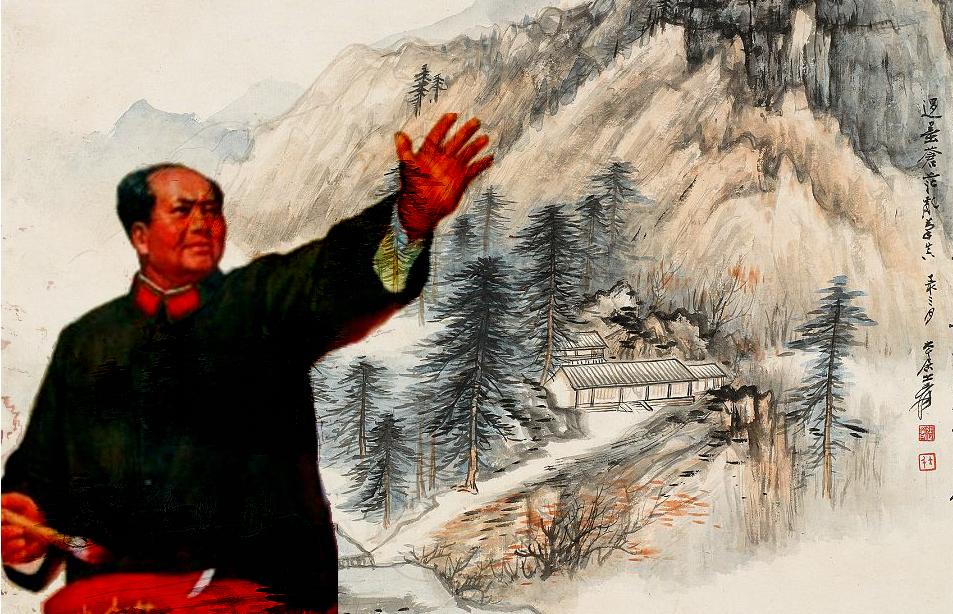
Mao Feng Shui Forest
How China’s Feng Shui forests survived Chairman Mao’s infamous ‘war against nature’.
11 comments.
“We can’t see wind, only the things it moves. Likewise, we can’t hear wind unless it’s flowing past something that makes it vibrate;” – we also cannot see light unless it is reflected by something, and we don’t know love unless it is given out or comes back to us.
I feel that things that are unseen and that can’t really be explained are the most beautiful things . And the most beautiful things we can see are , nature, are made from God. And God is beautiful God is love.
Wonderful stuff, Adam. I like the “noisy” trees – aspens, poplars, birches and willows that seem to rattle rather than rustle in the wind. They sweep away all my negative thoughts. For me, the pines are more subtle and more of an acquired taste – which I very much hope to acquire. Thanks.
Excellent 👌. I m living in india and would like to know the name of the trees which can grow up in hot weather and create sounds during wind flows like pine tree.
Thanks Ashish Kothari

Hi Ashish, Thanks for the comment. My knowledge of trees in India is very limited! A good place to look may be The Book of Indian Trees Book by K. C. Sahni
Adam, I awoke this morning to see the wind in the trees. I turned off the fans, then, and listened. Wind concertos have been a medicine of mine for many moons. So much Beauty expressed in the music and the dance. This morning I was inspired to step into a deeper intimacy with wind, to know it, to discover the science and the spirit of wind. Fortunately, for me, I found your blog immediately. Thank you for a new word with as much beauty as what it is describing — psithurism. thank you for the quotes. Some were familiar, Others I added to my collection. And thank you for your thoughtful attunement to that which is truly Great. All Love. Michele
Many thanks Michele!
Beautiful, interesting, and inspiring. Man oh Man, I wanna hear more and more. Good work!
Many thanks Elena, glad you enjoyed!
Nice article, thanks. The Austrian composer Peter Ablinger has used field recordings of different types of trees, https://ablinger.mur.at/ww18.html “… And I found that the colour of the noise of specific trees are really constant; therefore: as long as the season is the same (thus, for example, as long as the leaves of a deciduous tree are still green) the sound colour of an (English) oak always sounds the same irrespective of the force of the wind (strong or weak = loud or soft) or whether the oak stands on the North Sea or the Adriatic.” I think he has also written musical compositions in the form of designs of imaginary forests.
Leave a Reply Cancel reply
Your email address will not be published. Required fields are marked *
Search for creative inspiration
19,890 quotes, descriptions and writing prompts, 4,964 themes
winter trees - quotes and descriptions to inspire creative writing
- Autumn to winter
- cold weather
- cold winter
- first day of winter
- mild winter
- seasonal change
- snow clouds
- snow forest
- snowball fight
- start of winter
- story writing help
- winter landscape
- winter leaves
- winter months
- winter season
- winter storm
- winter sunset
- Winter to spring
- winter wonderland
- wintry wind
Into the cooling light of day, into the welcome frosty whispers, reach branches bare and clean. For these wintry trees are the promise of the new come the horizon-rested springtime.
Winter trees, light and lean, warm the season with their bold brown hues.
Balletic willow wands embrace the wintry wind.
Upon each tree born wand, naked from winter's rasp, come the buds of spring. Each tells of green leaves to come, or the sweet blossom within. Even as cold winds blow, they are such embryonic joy.
When the trees have almost cried their last golden tears for the passing of the warm season, glossy on the rain-washed street, winter is at hand. The sky is of rolling clouds, a thousand greys from deep to pale. In the morning half-light the evergreens are blackish-green silhouettes and the snowy mountain peaks behind them are every child's Christmas dream.
Winter trees line the next avenue. Their denuded forms stand starkly against the snow, almost like charcoal outlines sketched by a passing artist. Along limbs that not long ago were adorned with the vibrant colours of autumn lies an unblemished white layer. They are the trees of storybooks, of paintings and christmas cards and as I pass I can't help but extend an ungloved had to feel the rough bark.
Winter trees shiver in the bitter wind, naked branches adorned with snow. Clusters of twigs, gnarled and twisted, extend like the very hands of old man winter, ready to catch the soft falling flakes. Against the dark mossy trunk the brilliant white drifts rise in soft curves and fall again to the hidden ground. It will be some time before the trees awaken and when they do it will be a slow stirring, gradually growing unnoticed buds until finally the delicate papery leaves and blooms within are ready.
Gazing at the winter trees it's hard to imagine them re-clothed in their finery. With roots buried deep in the frozen earth they sleep, their twigs moving in the breeze, stirring their wintry dreams. Ice forms and melts, snow showers come and go; then each spring the first delicate blossoms and leaves send a frisson of joy through the neighbourhood. Yet as summer wears on we take the deep green leaves for granted until finally they blush the colours of autumn.
After last season the winter trees simply did not wake. We feared they were dead, that they had died in their seasonal slumber, but our tests showed living cores. The farmers, the biologists and the gardeners floated tens of conflicting theories, but still they remained in their wintry form - bare limbs extending into the blue sky. The birds hopped on the boughs that stubbornly refused to grow buds. The trees stayed that way all through the summer and fall, only looking right in the winter time under the flurries of snow. When they remained bare the next spring the concern intensified, next came the failure of the wheat seed to germinate. Each one remaining inanimate in the soil...
I half expect the winter trees to sneeze under the snow they carry, sending it raining down onto the newly white ground below. With the dampness in the air the bark has grown darker than it is in the summer time, from mid-brown to a sable hue.
By the morning the winter trees are iced as thickly as the christmas cake frosting. Yesterday they were rough twigs, their beauty having fallen to the ground in autumn. Today they capture the eye and raise the spirit; today they are living art, regal in the brilliant sun-rays. Were the bark silvery and white they might not be so pretty, for me it is the contrast of the pure white snow against the deep brown bark that perfects the scene.
Winter trees stand amid twisting roots that writhe until each disappears into the frozen soil. Rough bark glistens with early morning frost, just enough to whiten the raised ridges. Dark cracks lie in the bark like scars, yet each woody crevice only serves to make them all the more bewitching.
For me the poem of winter lies locked in the sleeping trees; for they stand silently dreaming of spring. It is the poetry that bursts forth in the sunshine when the gentle warmth bids the winter farewell. Each leaf is a word more beautiful than can be spoken, each petal a gentle refrain. It isn't a poetry for the ears but the eyes, a poetry that needs no translation.
The winter trees stand like a song half sung, unsure of the melody to come. Only when the wind breathes warm once more will they recall the rolling words and unfurl them green in the sun. Until then they are mute, forlorn in the wind and it is all I can do to whisper warm words as I pass.
It was summertime when my deep sleep began, now the winter is upon us. Waking to see the trees was like being shown a flash of a movie instead of real life. For me they were stunning in swathes of green just yesterday and now they are like awkward teenagers standing around not sure what to do. Perhaps tomorrow I will cease to be shocked, perhaps when I leave this air conditioned cocoon and feel the keen bite of the wind I will know how much time has passed.
Sign in or sign up for Descriptionar i
Sign up for descriptionar i, recover your descriptionar i password.
Keep track of your favorite writers on Descriptionari
We won't spam your account. Set your permissions during sign up or at any time afterward.

IMAGES
VIDEO
COMMENTS
Example: "The fierce wind shook the window panes, a testament to the storm's power.". Wild: Wild wind suggests a sense of chaos and lack of control. Example: "The wild wind tossed the ship like a toy, waves crashing over the deck.". Gusty: Gusty winds are strong and sudden, capable of causing brief moments of disarray.
01 Handsome. Use handsome to describe a tree that checks all the boxes of health, meaning it's tall, has lush leaves, sturdy branches and strong bark. You'd see a handsome tree in a nature magazine or painting. It's picture perfect, and if it's in someone's yard, it's likely well taken care of.
When describing wind, it is important to choose adjectives and adverbs that accurately convey the speed, direction, and force of the wind. For example, writers might use adjectives like "strong," "gentle," "fierce," or "blustery" to describe the wind's intensity. Adverbs like "swiftly," "forcefully," "gently," or ...
03 Light breeze. A light breeze has a force of 2 and wind knots of 4 to 6. This is enough for you to feel the wind on your face and for wind vanes to move. There is a very light, almost quiet rustling of leaves, and at this point, small wavelets begin to form; however, there is no breaking. 04 Gentle breeze.
Appeal to the Senses. Engage multiple senses when describing the wind. Include details about how it feels on the skin (e.g., "prickling my skin" or "caressing my face"), how it sounds (e.g., "rustling leaves" or "whistling through the trees"), and even how it smells if relevant (e.g., "carrying the scent of the ocean").
"How to describe weather" seemed like a good place to start. This way, you won't get stuck trying to figure out how to describe nice weather, or thinking up ways to describe rain. Hopefully, this will make your writing go faster. I always include simple as well as more creative ways to describe or write about weather.
Ways to Describe Wind in Writing. Here are 20 amazing ways to describe Wind in Creative Writing: The gentle breeze caressed the swaying trees. A howling gale tore through the barren landscape. Whispering zephyrs rustled the autumn leaves. Blustering gusts sent shivers down our spines. The relentless wind roared like an angry beast.
Let the wind rustle in the trees and sway the grassy wands, moving the fur of a mouse and the hair of a king all the same. Let the wind come as a wall, only to open up and allow us passage through, curling around us as if it were a soft quilt all along. Let the wind speak of adventures and rouse the noble heart into the ways of the hero whom is ...
Environmental Ambience Adds Depth to Writing. Do you take advantage of it? The opening paragraph of Edward Bulwer-Lytton's novel Paul Clifford reads in part: "It was a dark and stormy night; the rain fell in torrents, except at occasional intervals, when it was checked by a violent gust of wind which swept up the streets … rattling along the house-tops, and fiercely agitating the scanty ...
Trees. - quotes and descriptions to inspire creative writing. The trees sang their greens as if they were a choir in that cathedral of summery blue. By Angela Abraham, @daisydescriptionari, January 30, 2023 . A chorus of greens dance in a celebratory wind, each of them ever ignited by sunlight. By Angela Abraham, @daisydescriptionari, January 8 ...
Imagery. Vivid descriptive language. To create a visual representation in the reader's mind. "The wind whispered through the leaves like a secret.". Simile. A comparison using "like" or "as". To draw a comparison for clearer imagery. "The wind roared like a lion asserting its dominance.". Metaphor.
Setting is much more than just a backdrop, which is why choosing the right one and describing it well is so important. To help with this, we have expanded and integrated this thesaurus into our online library at One Stop For Writers.Each entry has been enhanced to include possible sources of conflict, people commonly found in these locales, and setting-specific notes and tips, and the ...
Let readers know how they should feel about the tree, as well, by the words you use to describe it. Be specific. A version of this prompt was first posted on SchoolhouseTeachers.com. You can go directly to SchoolhouseTeachers.com to sign up and take advantage of many exciting courses written for grades K-12.
The [wind] brought the forest to life. Or. The leaves were like a whispering audience. Or . The leaves sang a melody of comfort for those passing through the forest. You could come up with unlimited creative descriptions for the sounds of rustling in a forest.
The tree is the grand poem of the living world, a beauty that encourages the spirit to dance though words, to make our odes to it's branches that spread heaven-bound. And in the strong light of the new day it creates a kiss for the senses in those moving leaves, the thousand green hues and the soft whispering in the wind.
Trees provide some of the most common and admired ways for wind to make itself heard. This sound has been termed psithurism ( sith-err-iz-um ). The naturalist author and founding member of the RSPB, W.H. Hudson, suggests in Birds and Man (1901), that psithurism is salubrious. He describes the sound of wind in the trees as "very restorative ...
(especially of snow or leaves) be moved in small swirling masses by sudden gusts of wind. "gusts of snow flurried through the door" It's a word that, to me at least, projects innocence and nostalgia, so when used to describe ashes, might evoke the discomfort and creepiness you seek.
1. Trees in summer are paradise-green. SIGHT 2. The forest floor is crinkly when you walk on it. SOUND 3. The bark of the trees feels like frozen, bubbled soup. TOUCH 4. The smell in the forest is like freshly-pressed laundry. SMELL 5. The fruit in the forest is syrup sweet when you bite into it. TASTE 6. The branches of the trees are shaped ...
Trees don't rear as a rule. And this one looks actually rather squat. Please don't use the word 'gnarled'. Stoic and world-weary both work - or just weary. Olive trees can live a couple of thousand years; this one looks past its first few hundred. Depending on where it grows, you could mention some of the historical events it may have witnessed.
Winter trees shiver in the bitter wind, naked branches adorned with snow. Clusters of twigs, gnarled and twisted, extend like the very hands of old man winter, ready to catch the soft falling flakes. Against the dark mossy trunk the brilliant white drifts rise in soft curves and fall again to the hidden ground.
It is far better, both for improving your descriptive abilities and your creative writing gifts overall, is to learn how to see and to understand more acutely what it is you see to better write down what you are seeing. You cannot, after all, describe something if you do not fully see it. Ooh! Sorry. Didn't mean to go on so long.
In UK English it is most common to describe trees as swaying in the wind. Sway/swaying/swayed. Poetry is very different to prose though and often you would use a very different word than normal everyday speech. For example, you could say the trees 'shivered' in the cold if you wanted to portray a sense of movement and winter.
Elegant ladies of tulle and and voile, the curtains dance minuets and saltarellos to unheard music of trees and clouds. The open window is their orchestra. So eloquent and beautiful you had to say 'and' twice. What's a saltarello? Trish, Aug 20, 2017. #7.